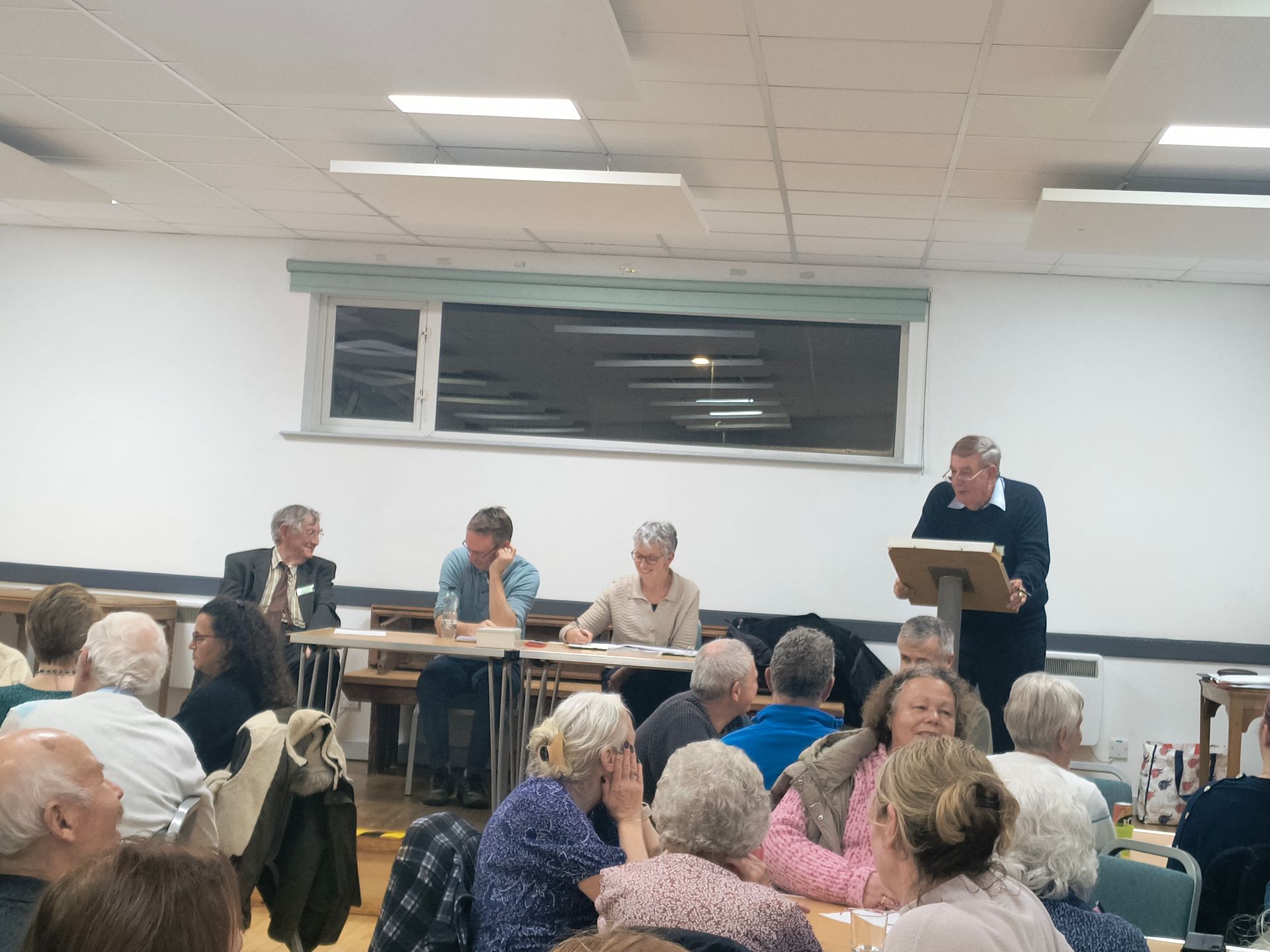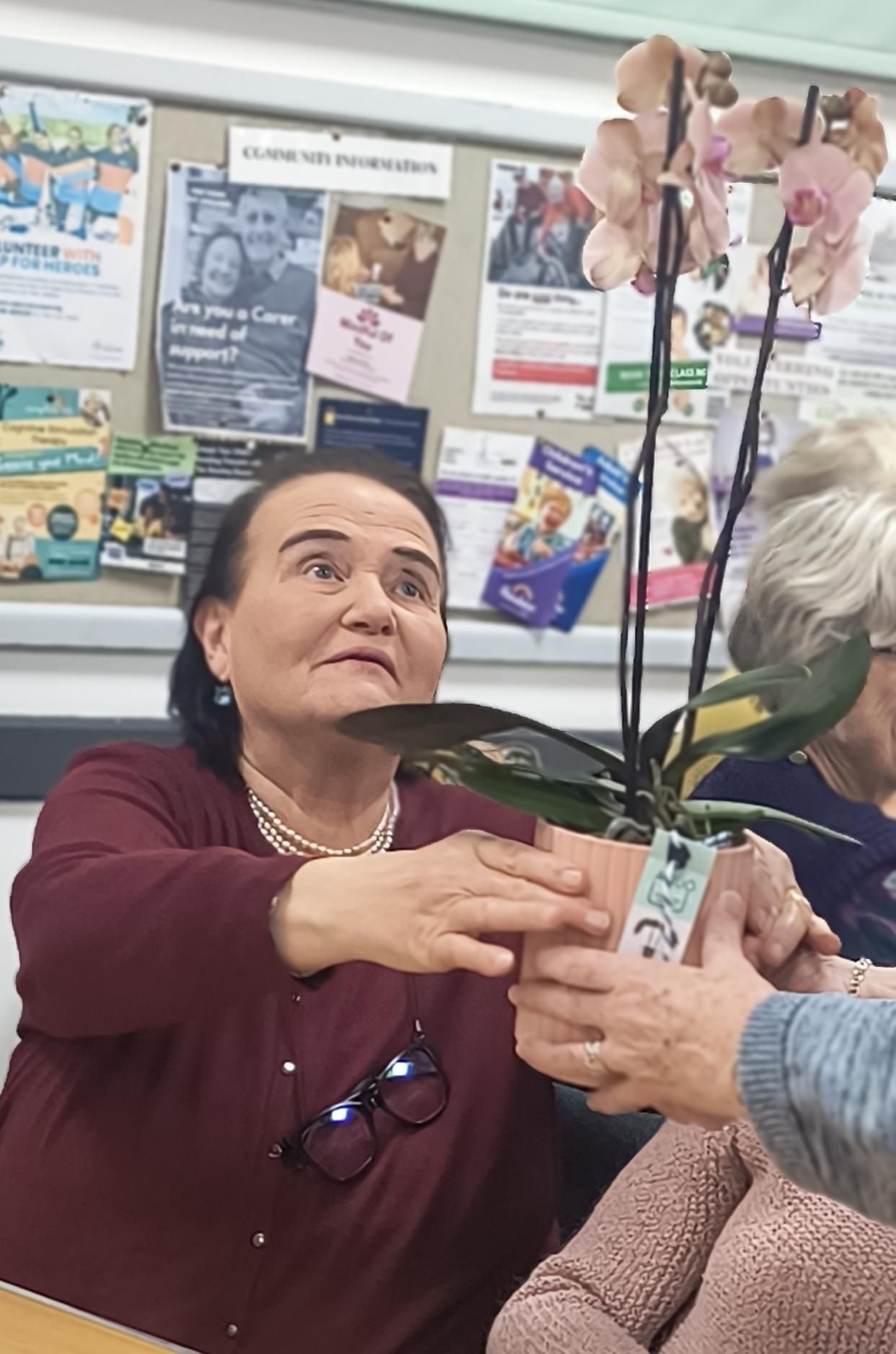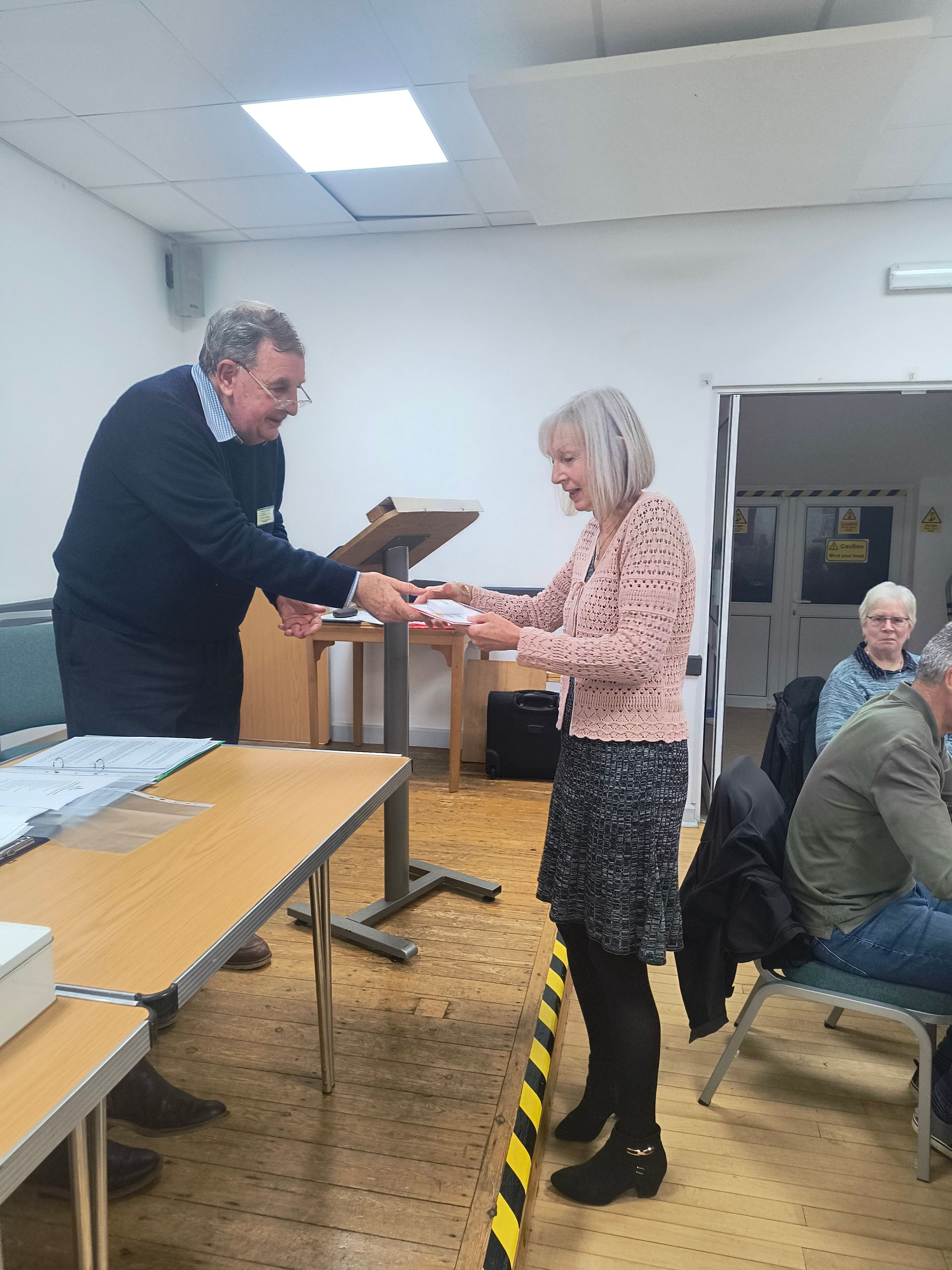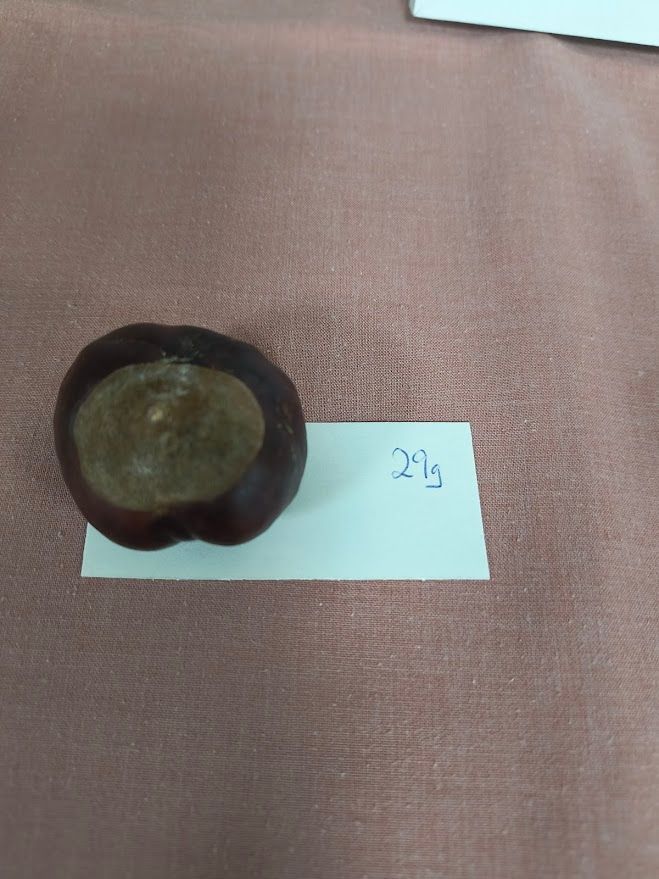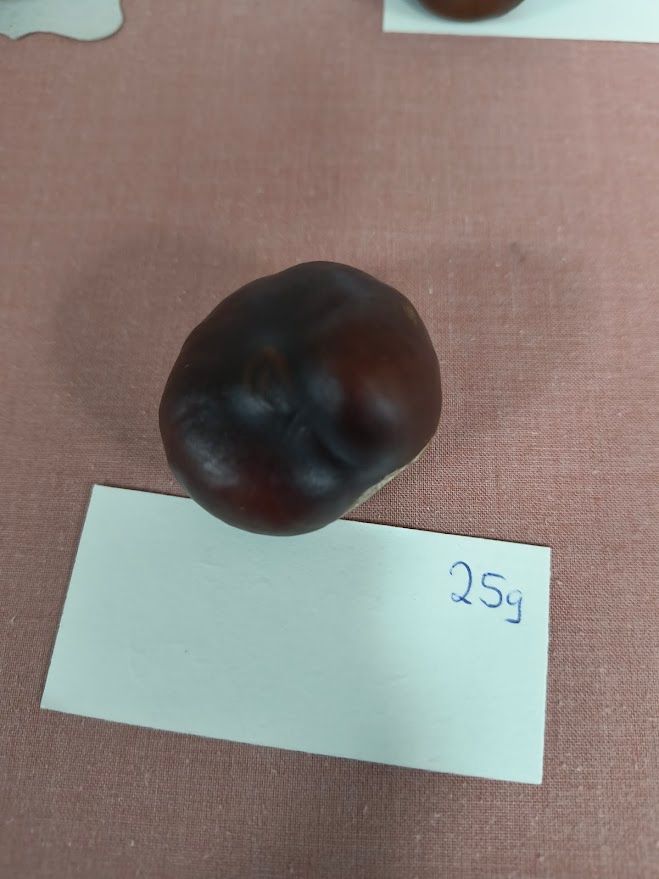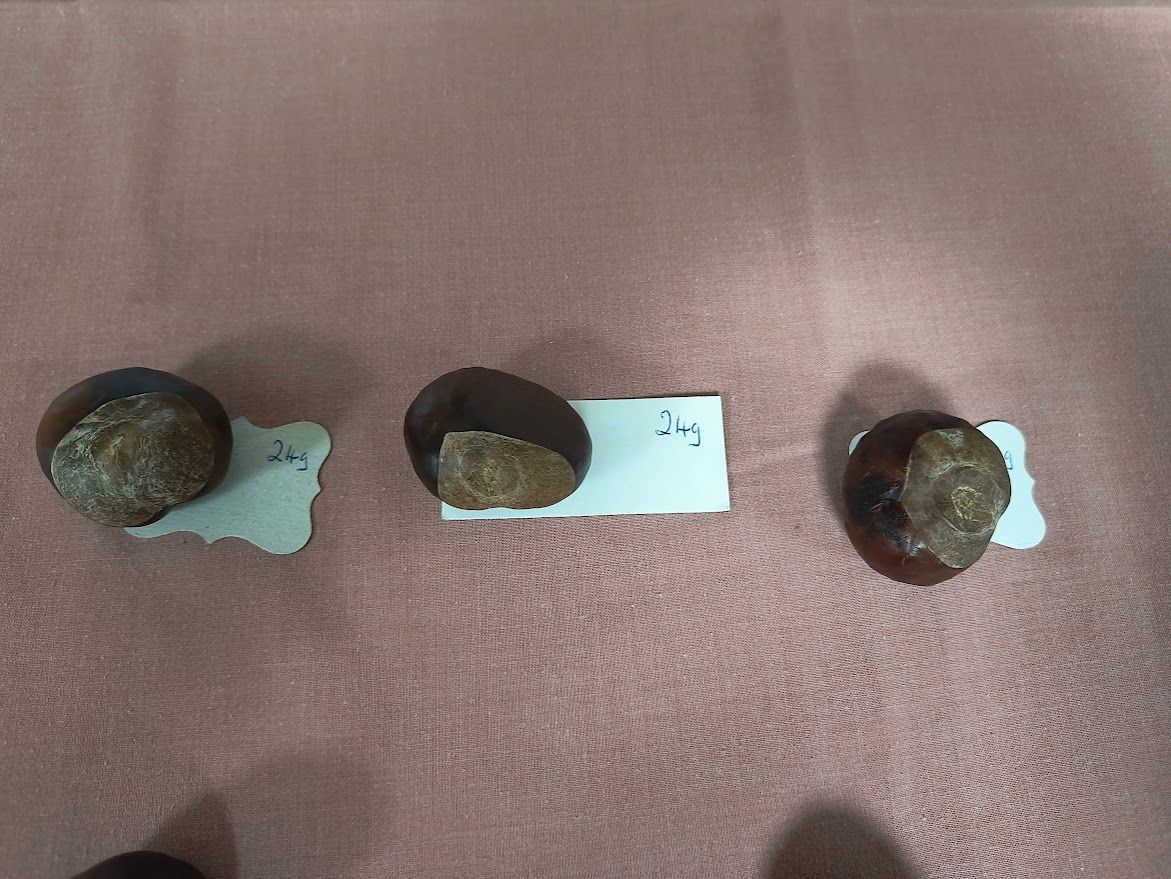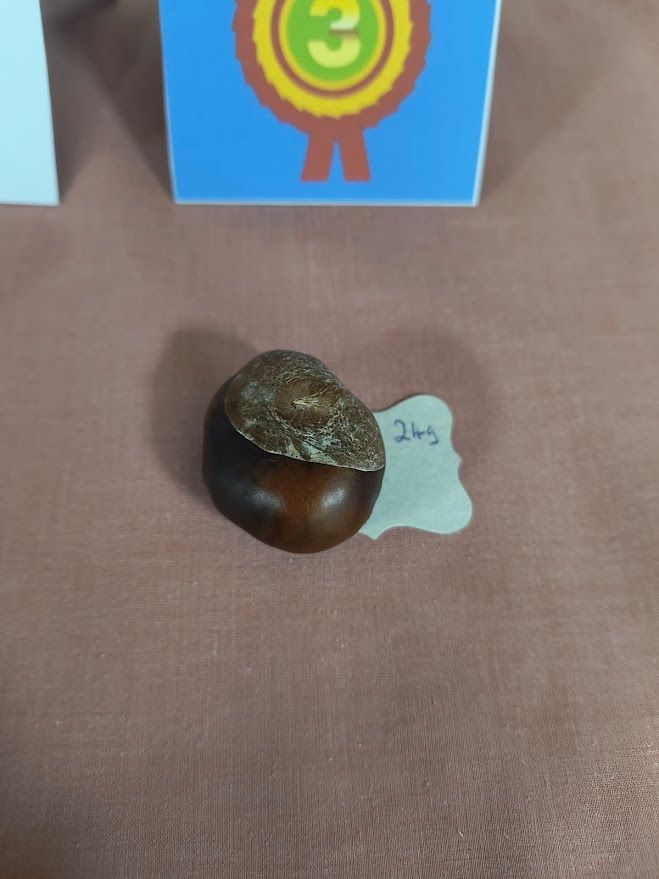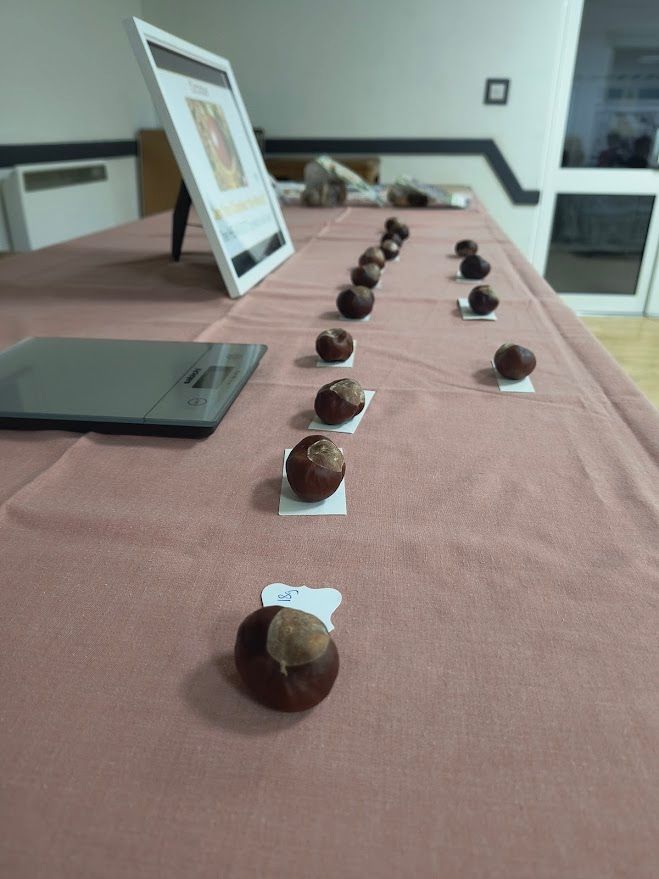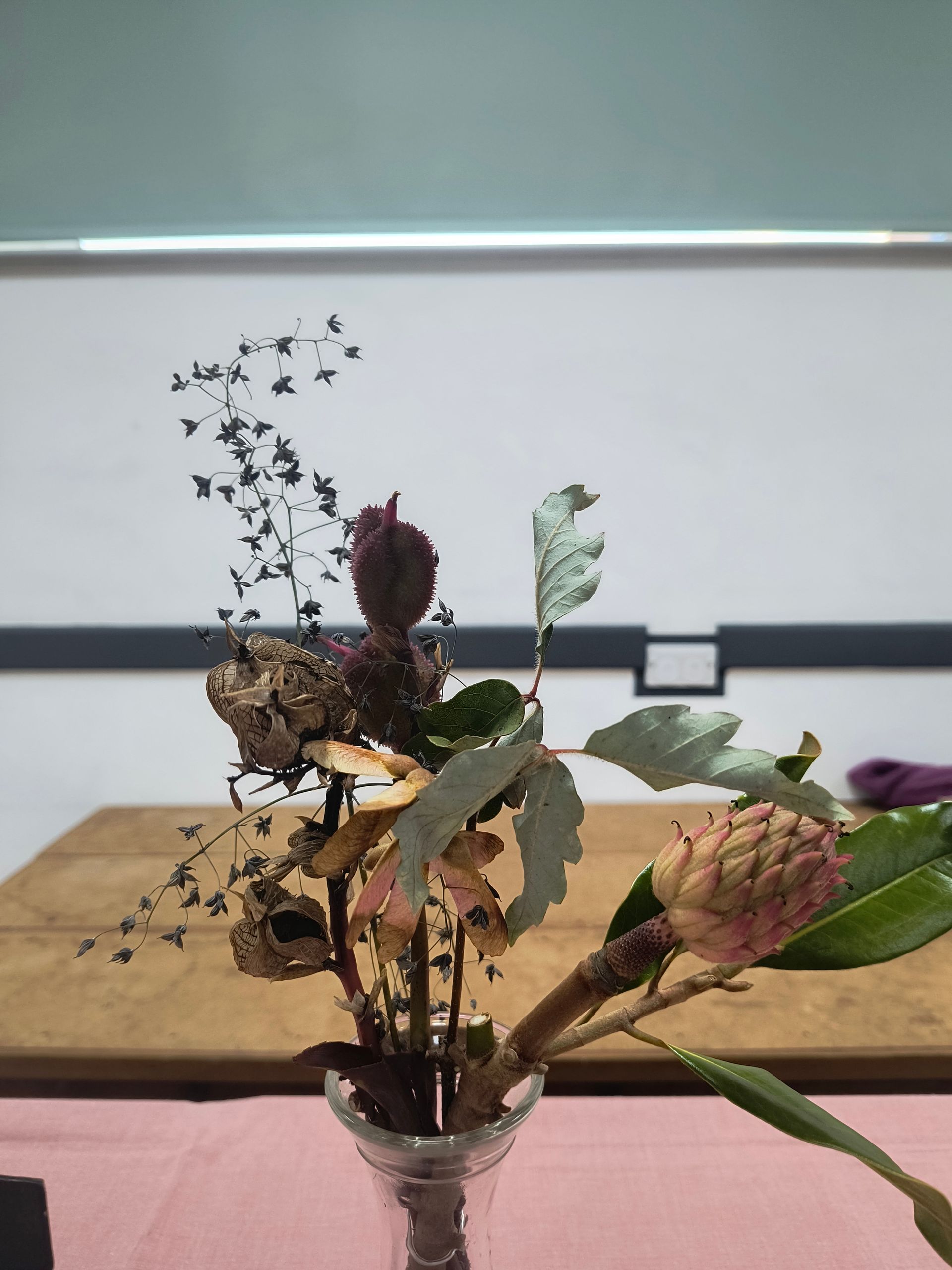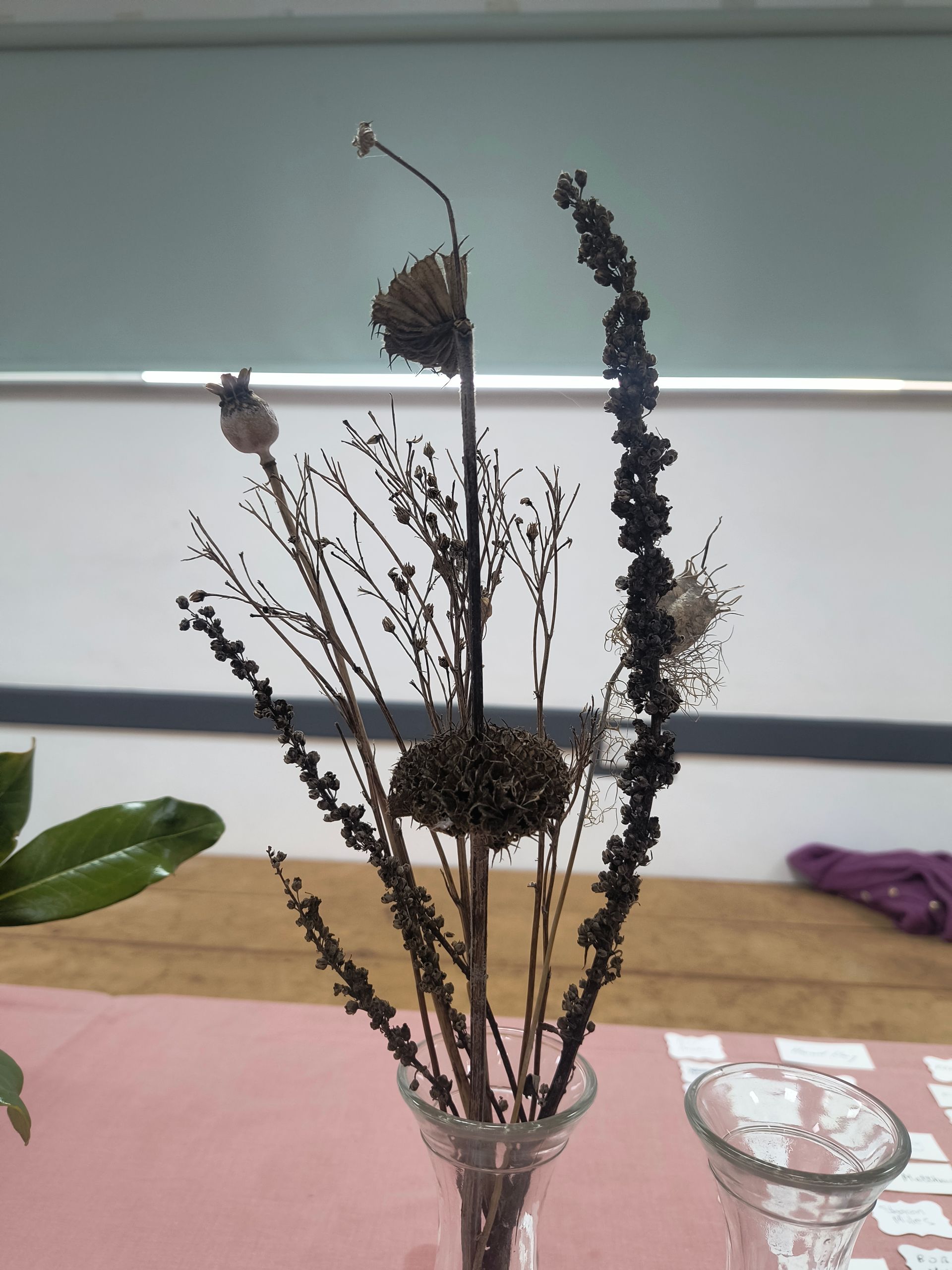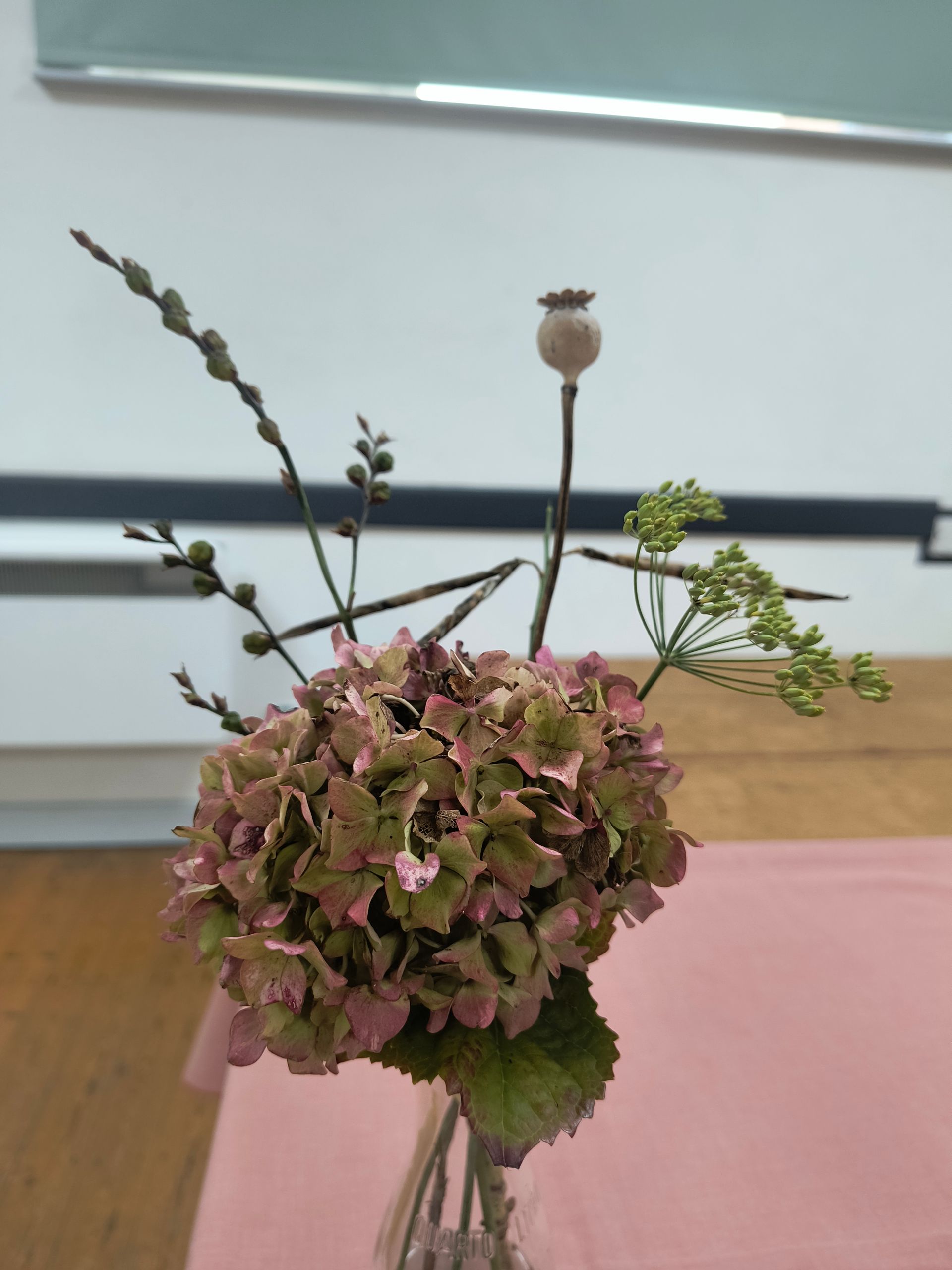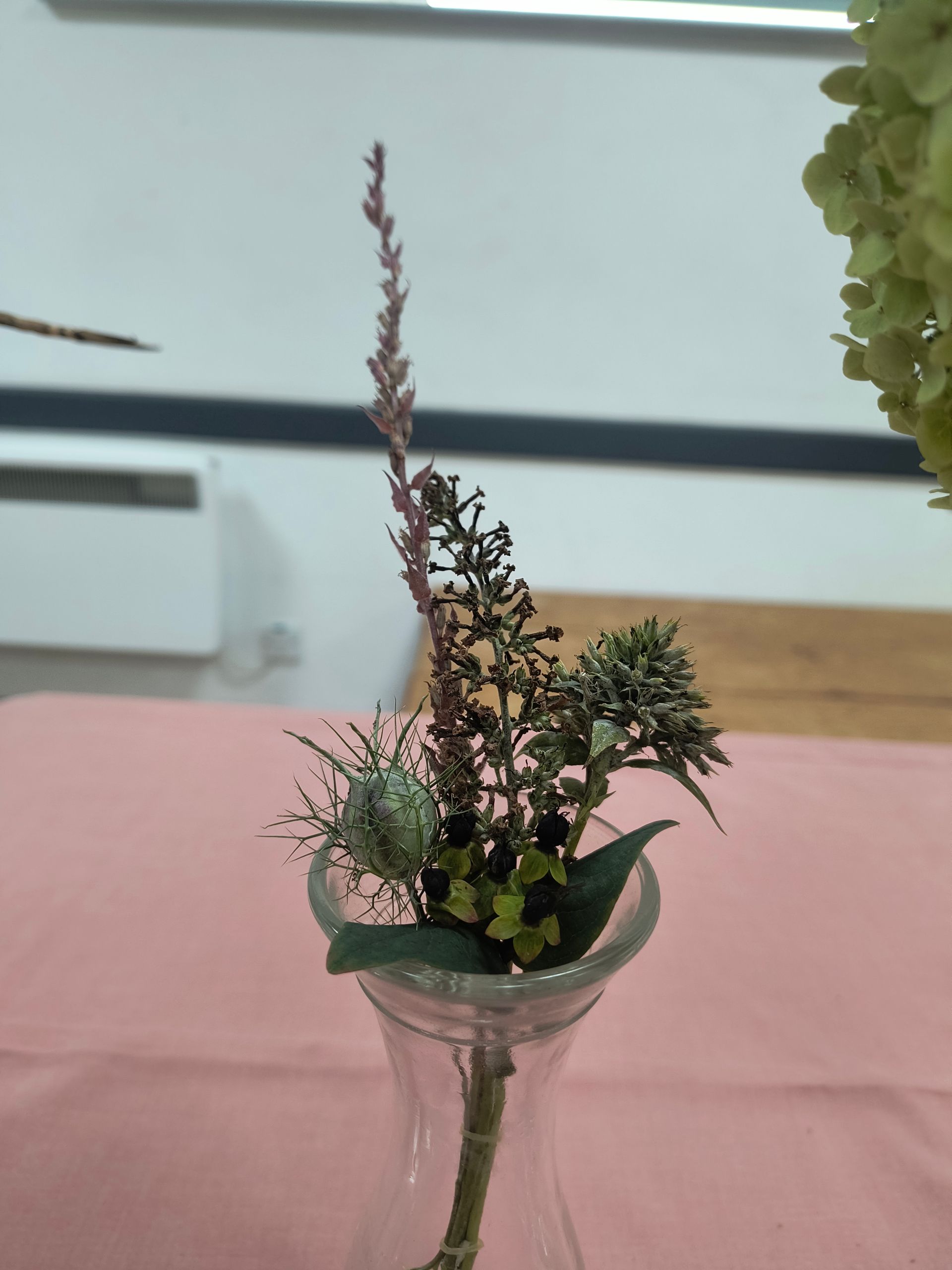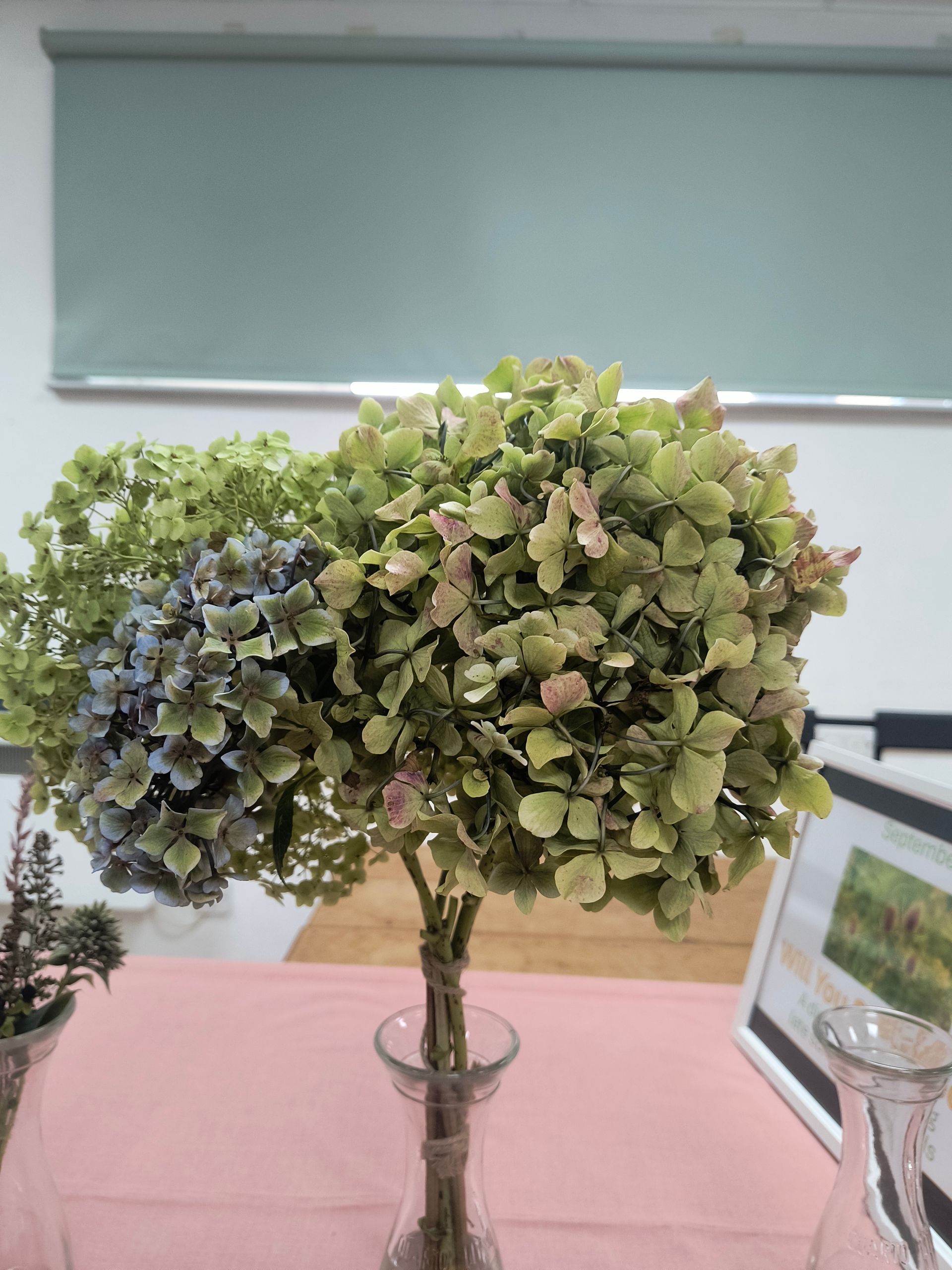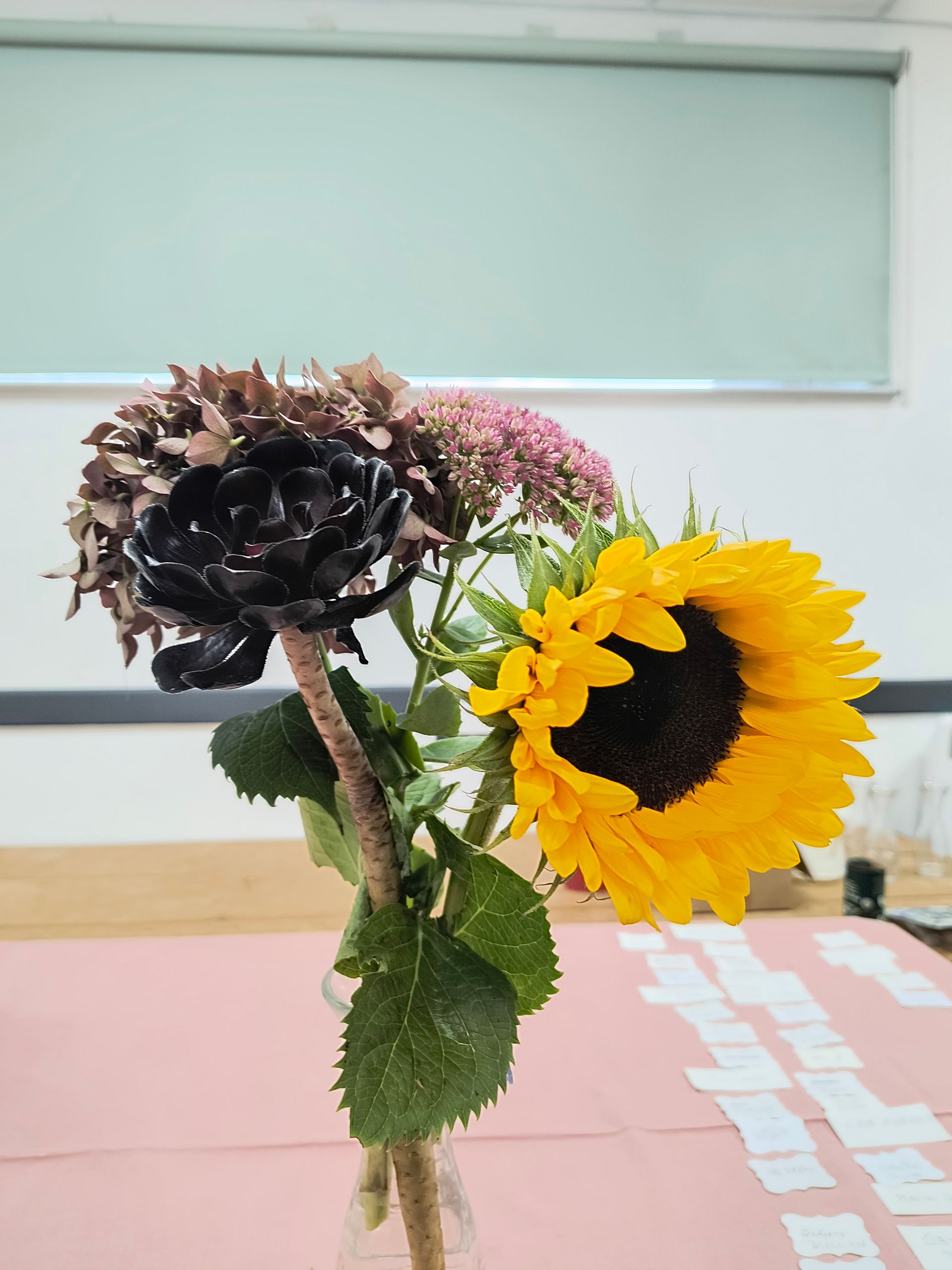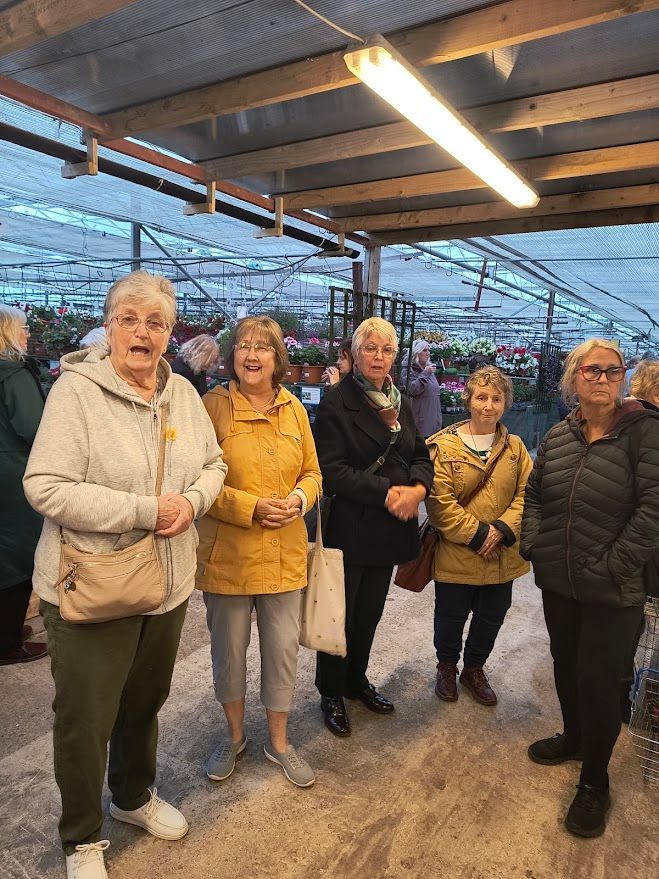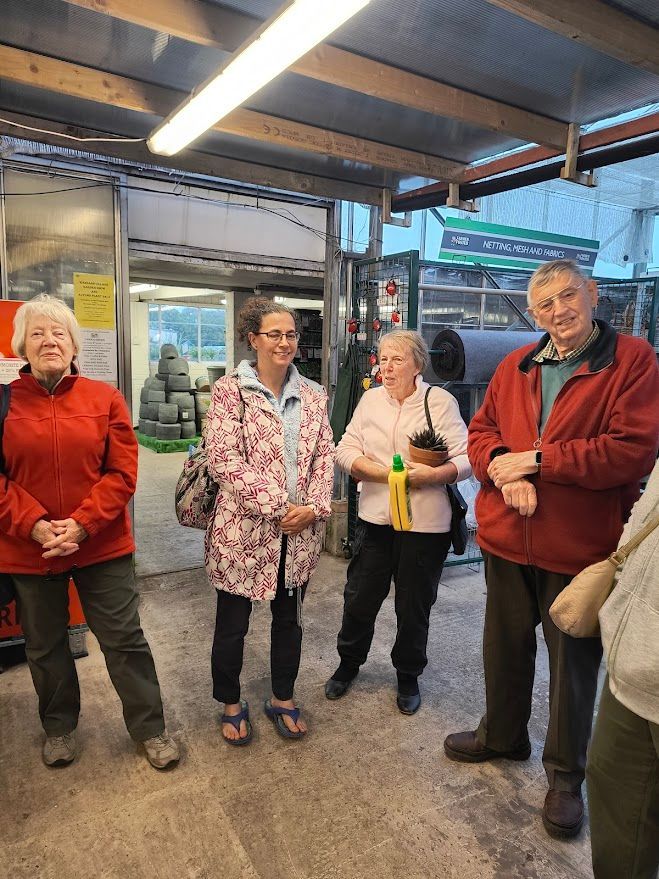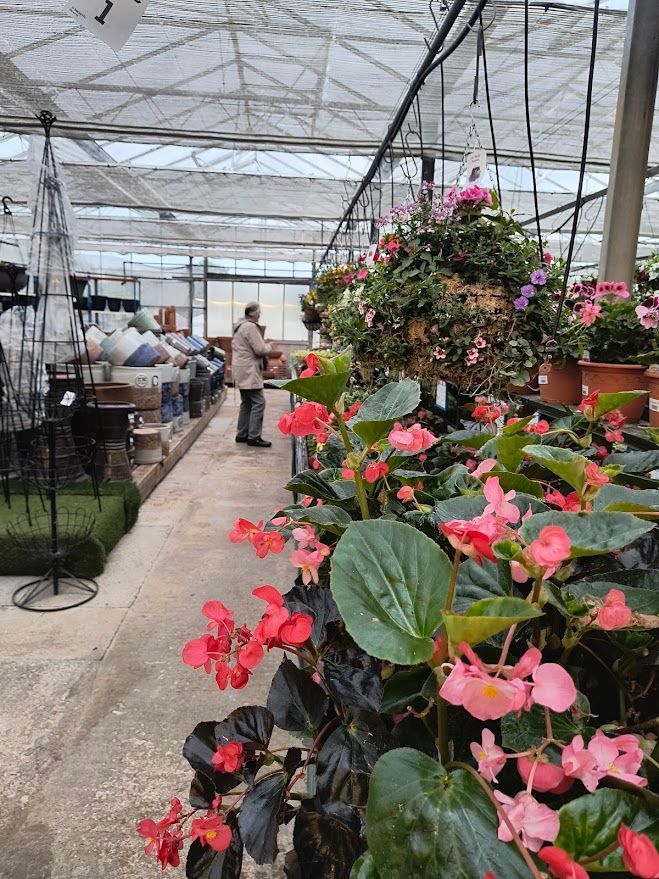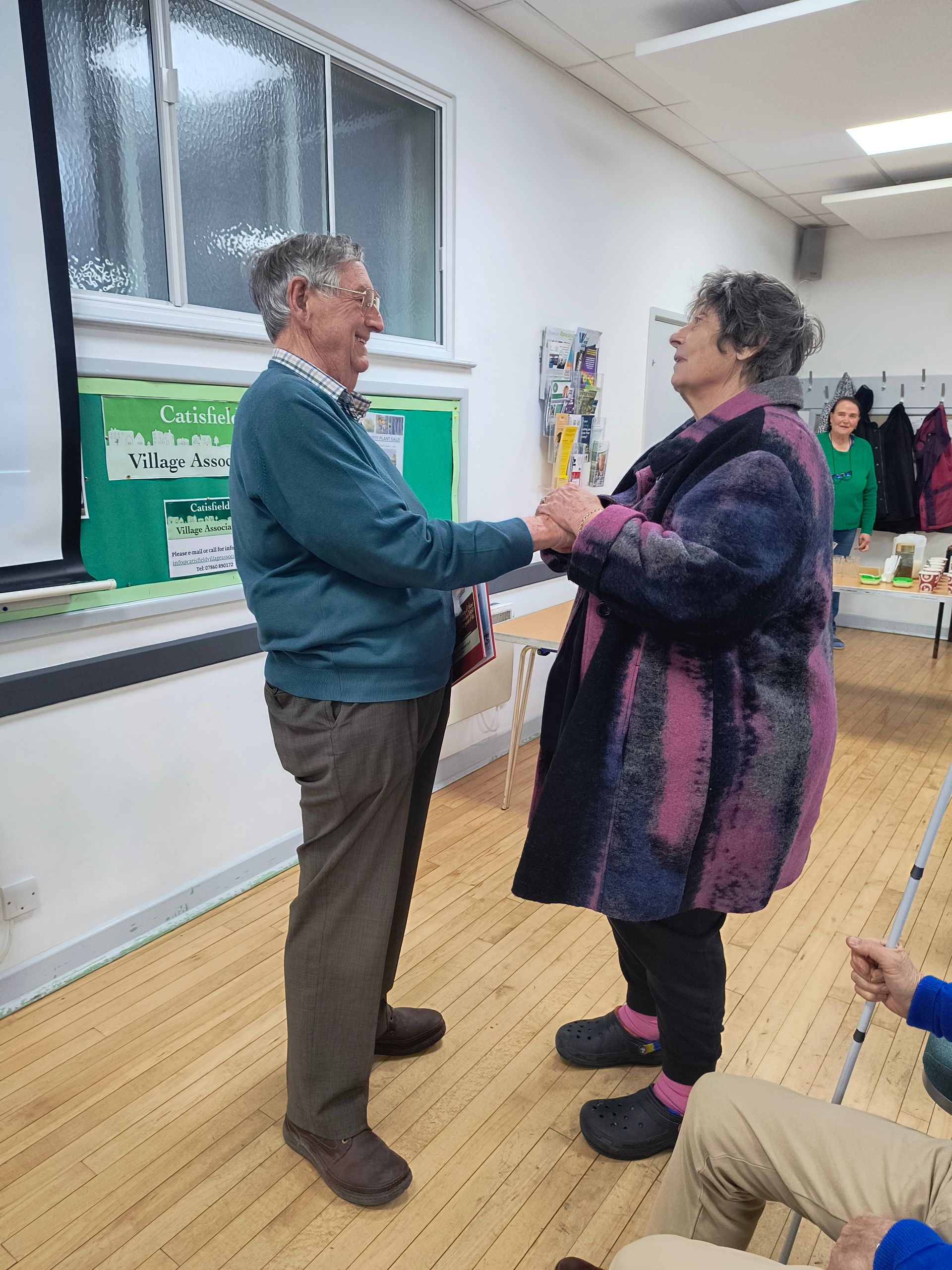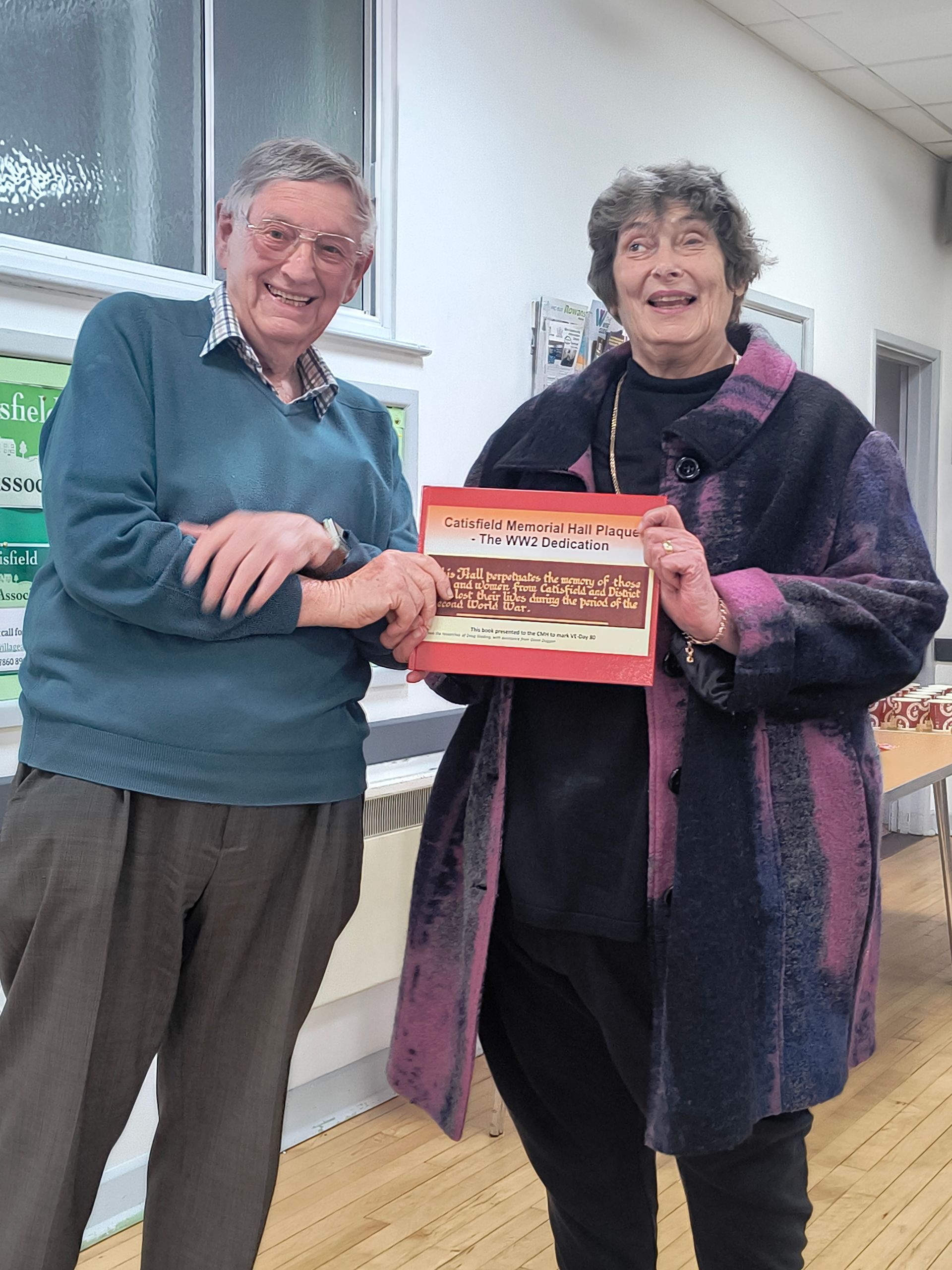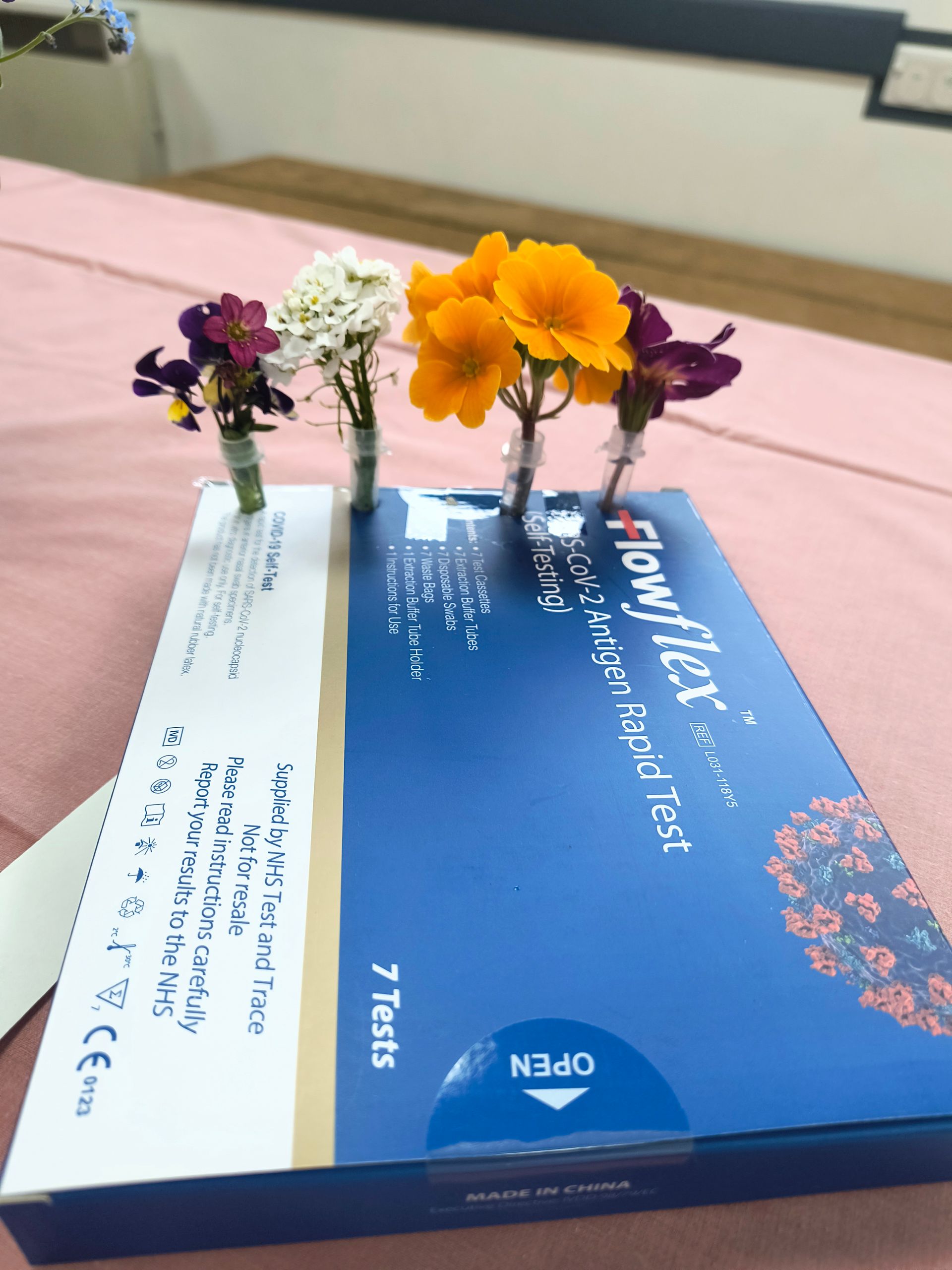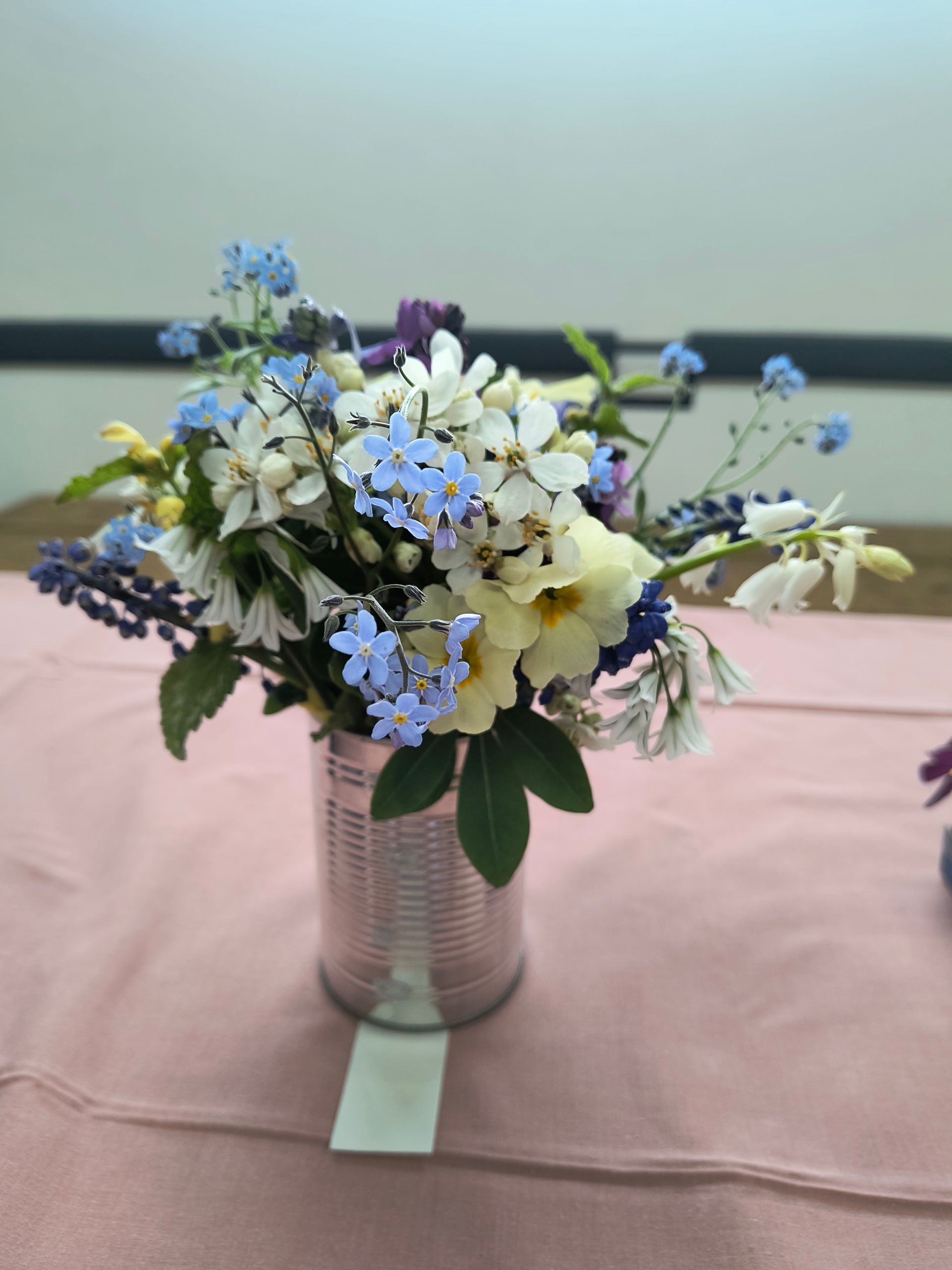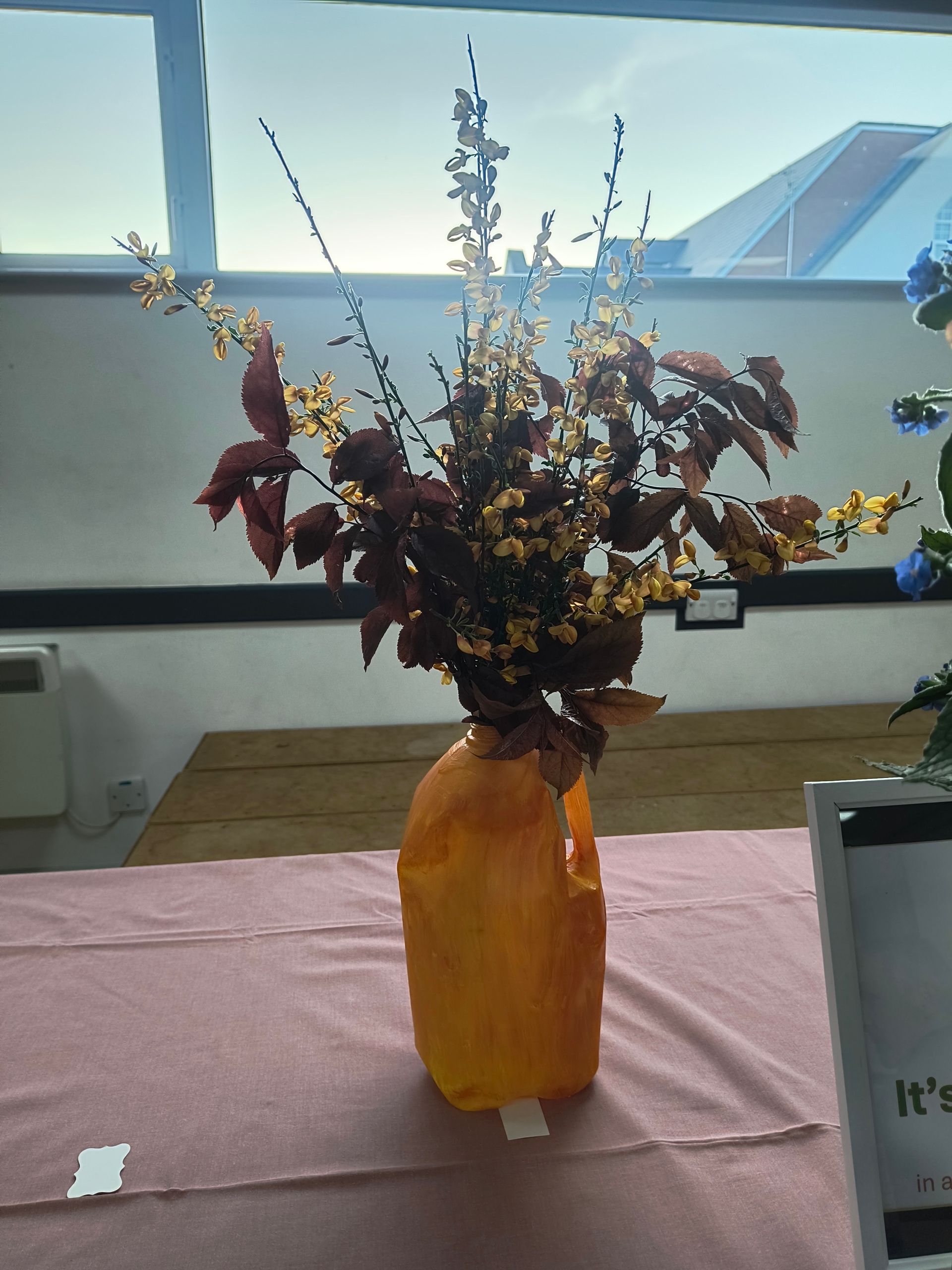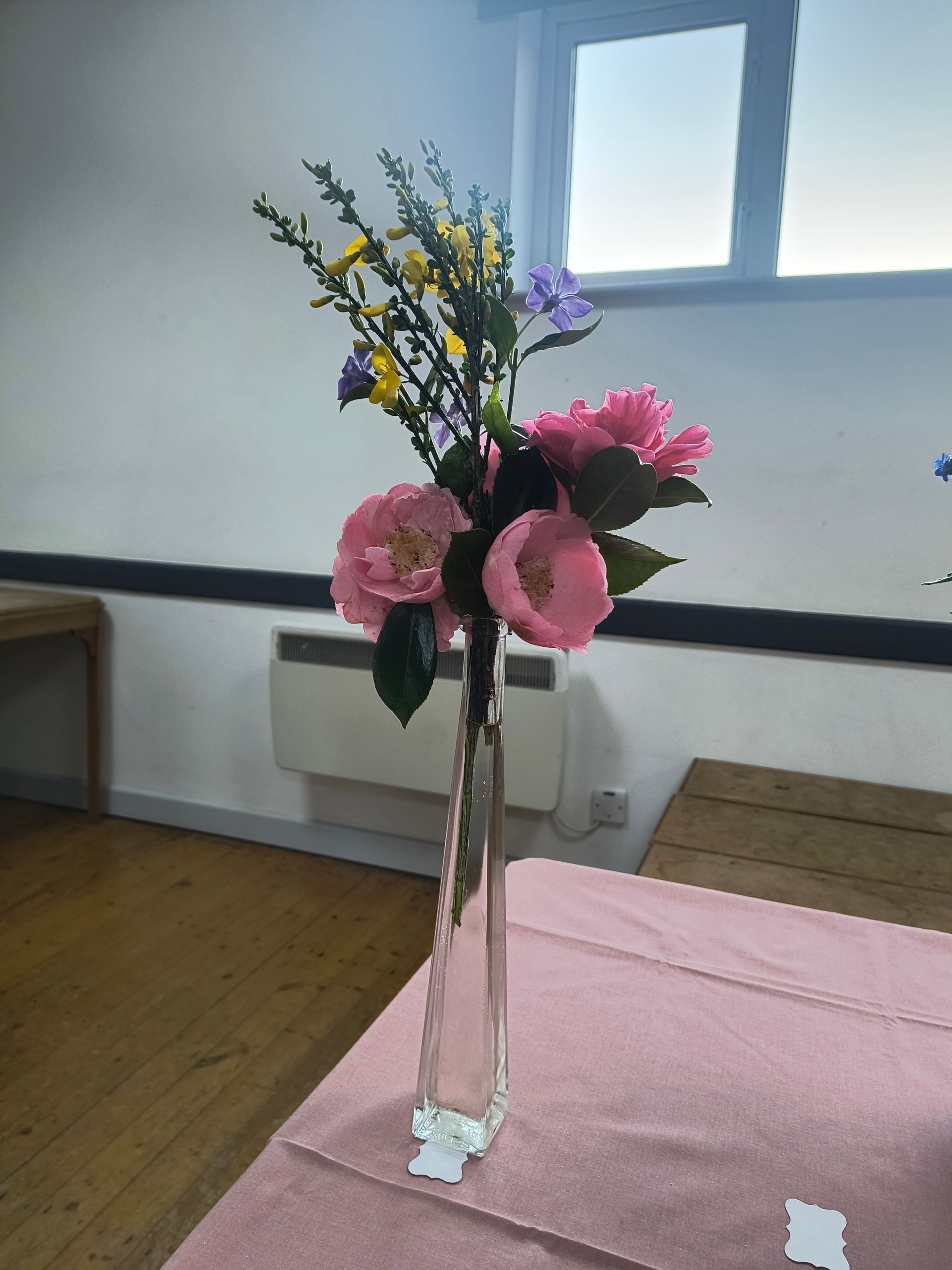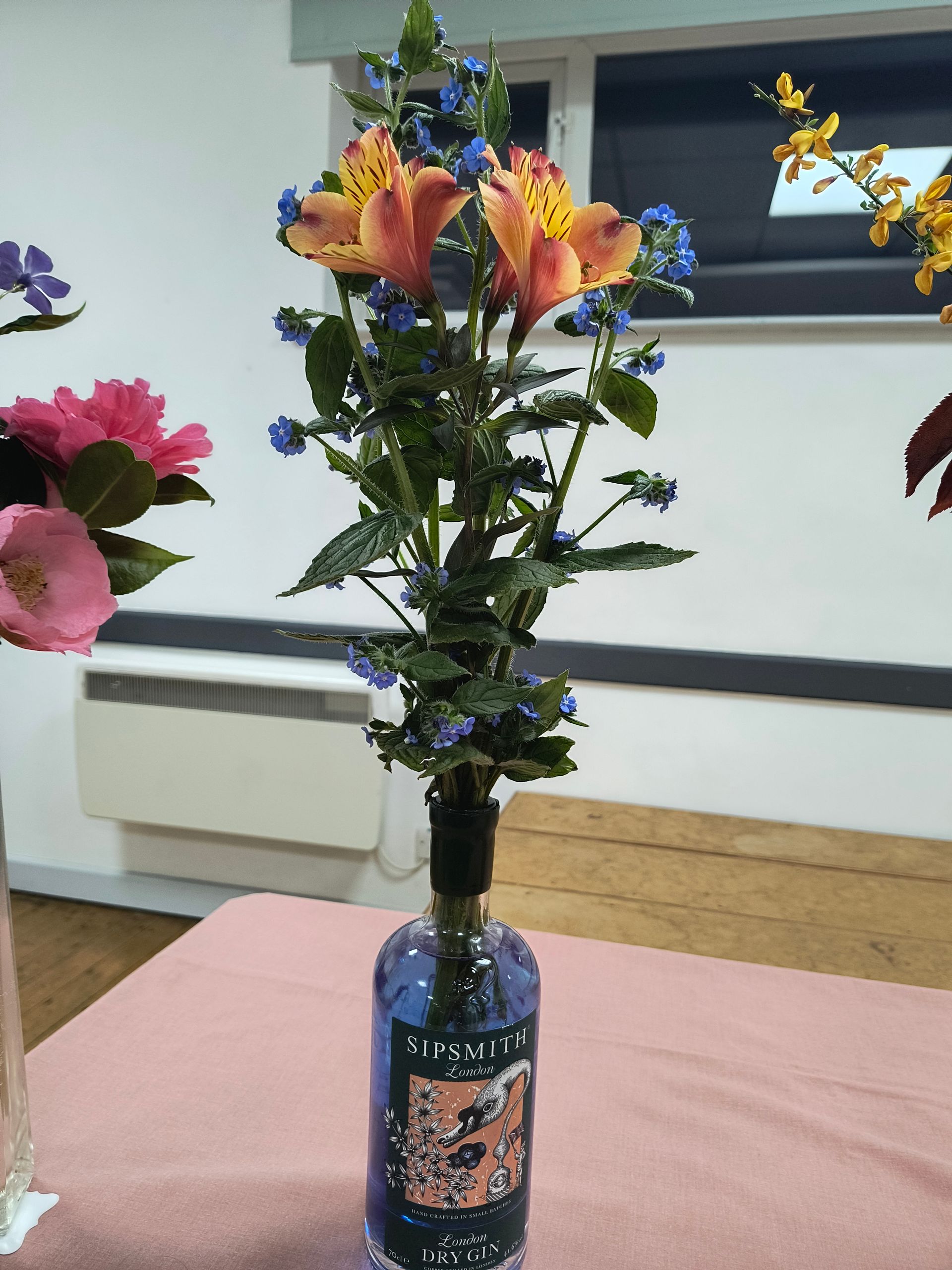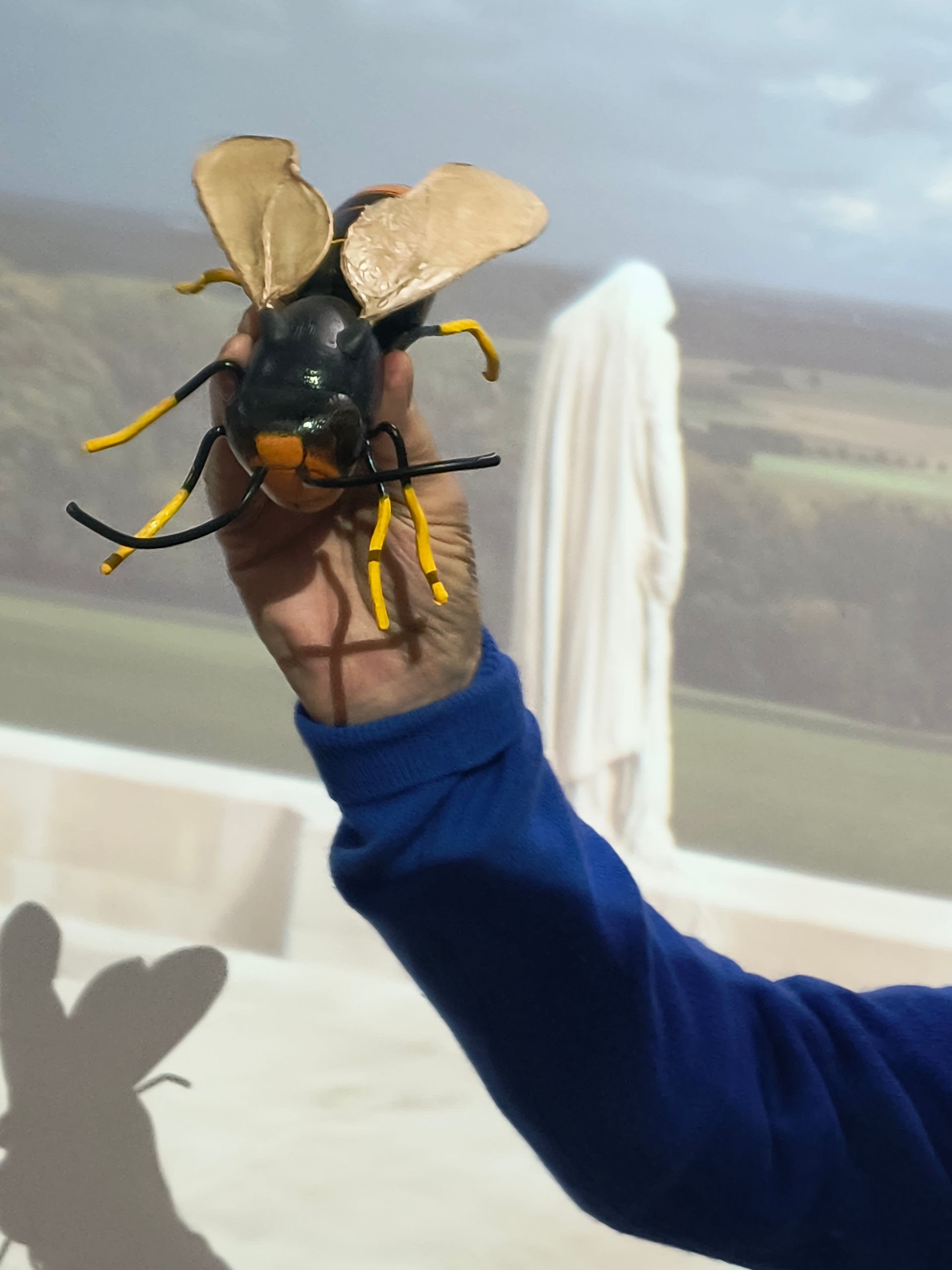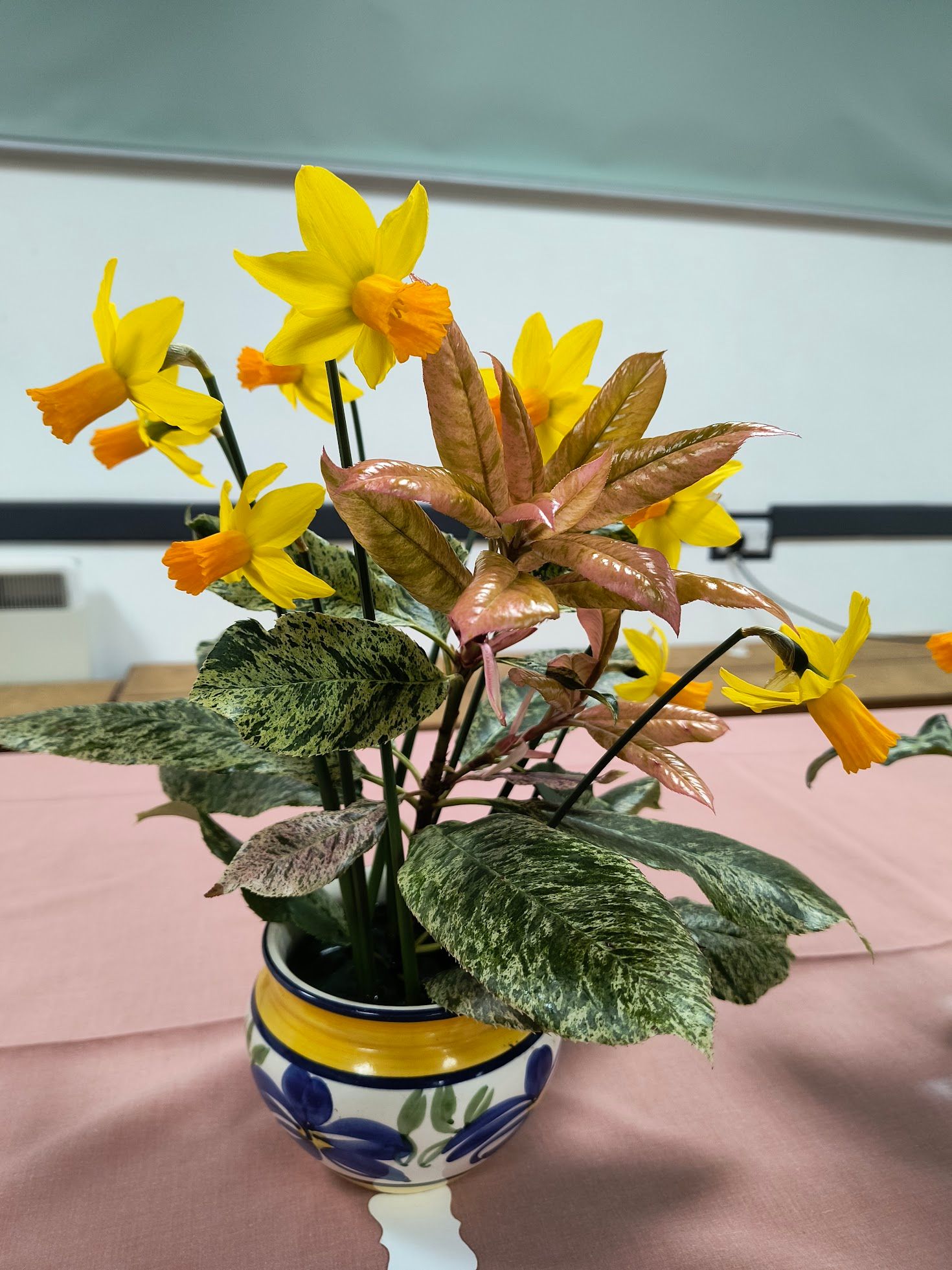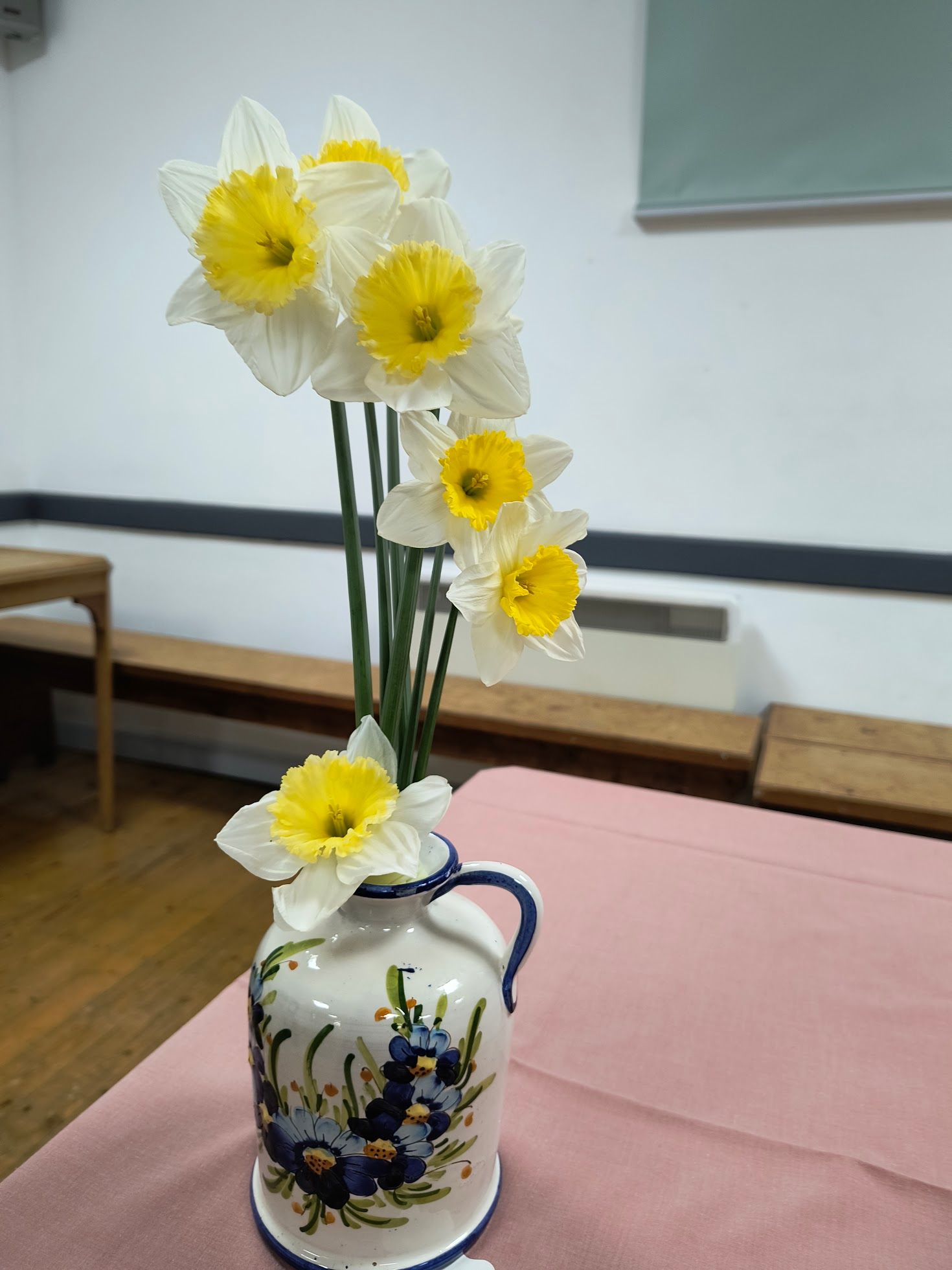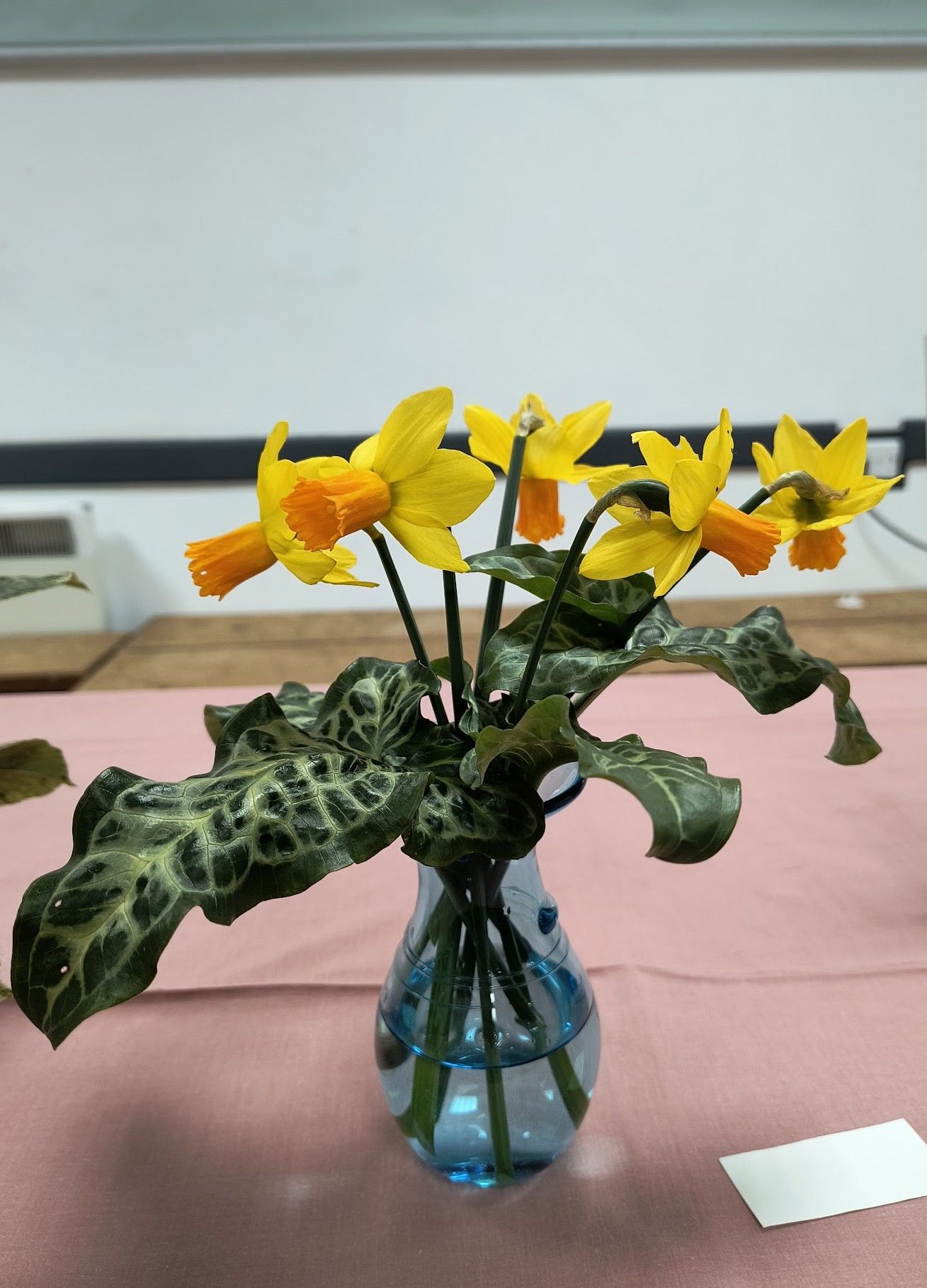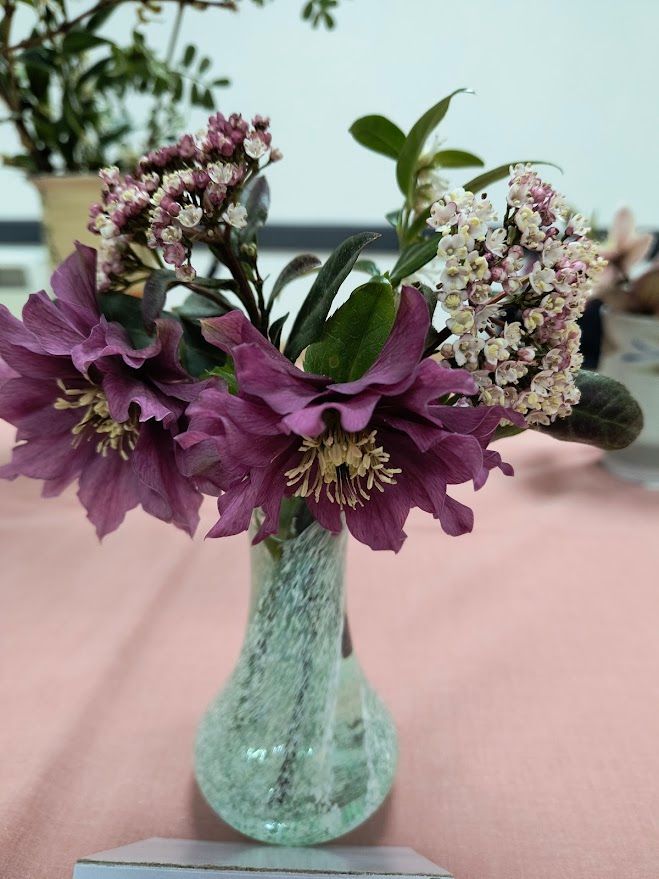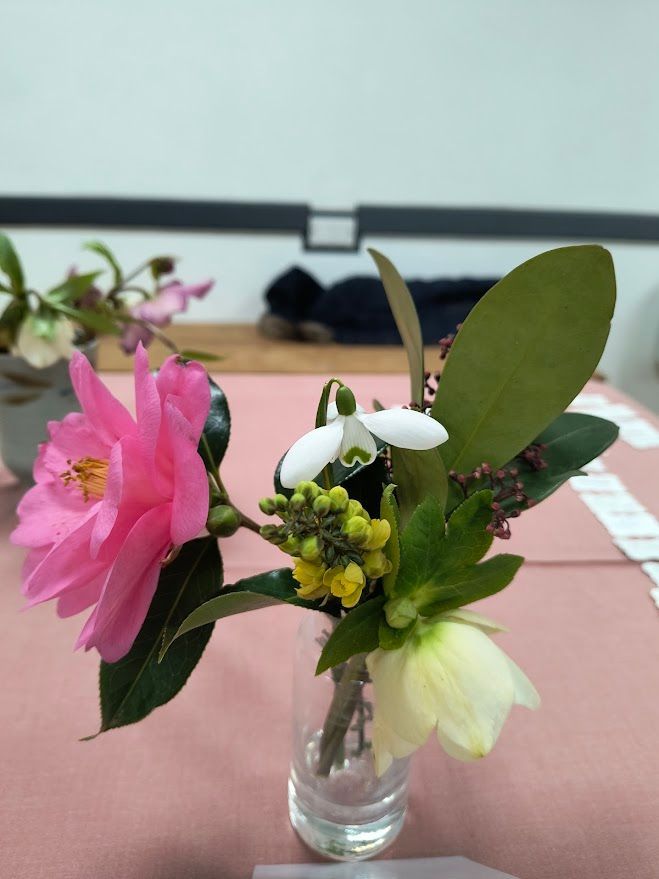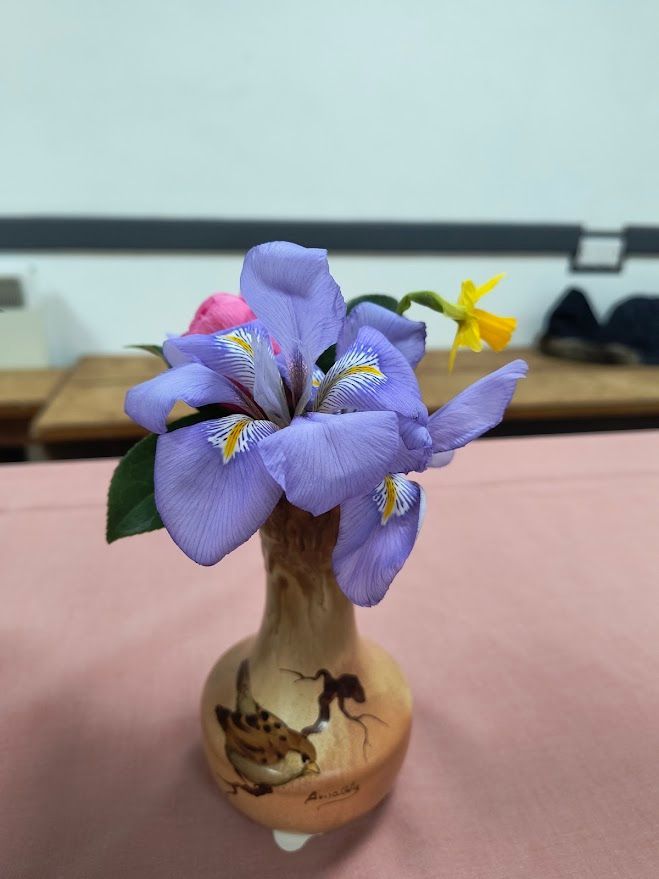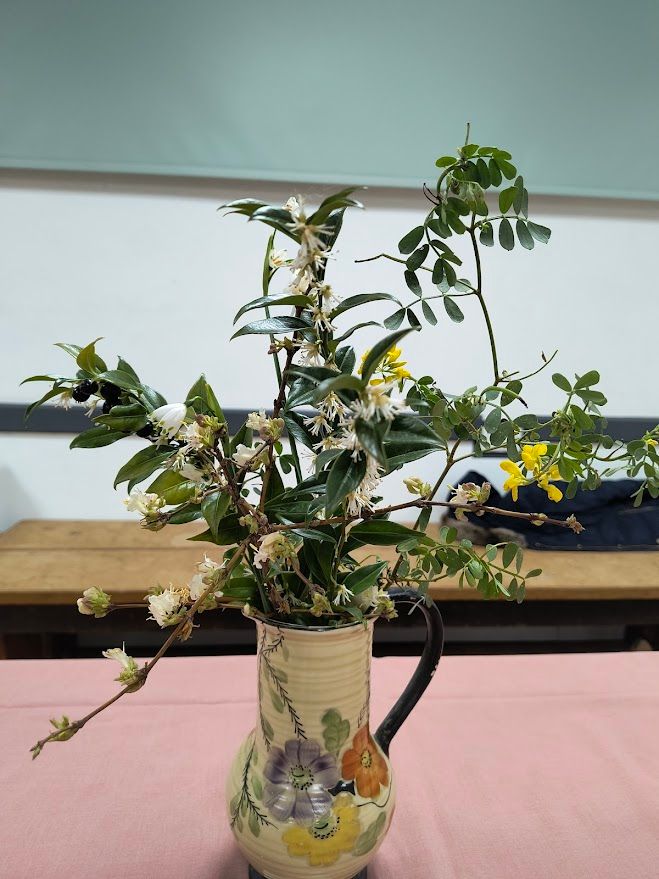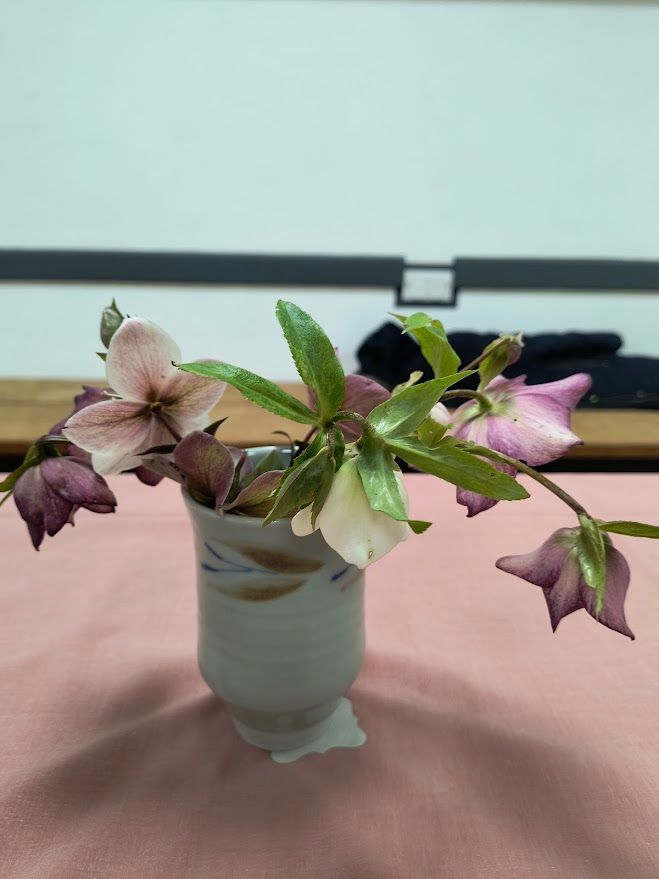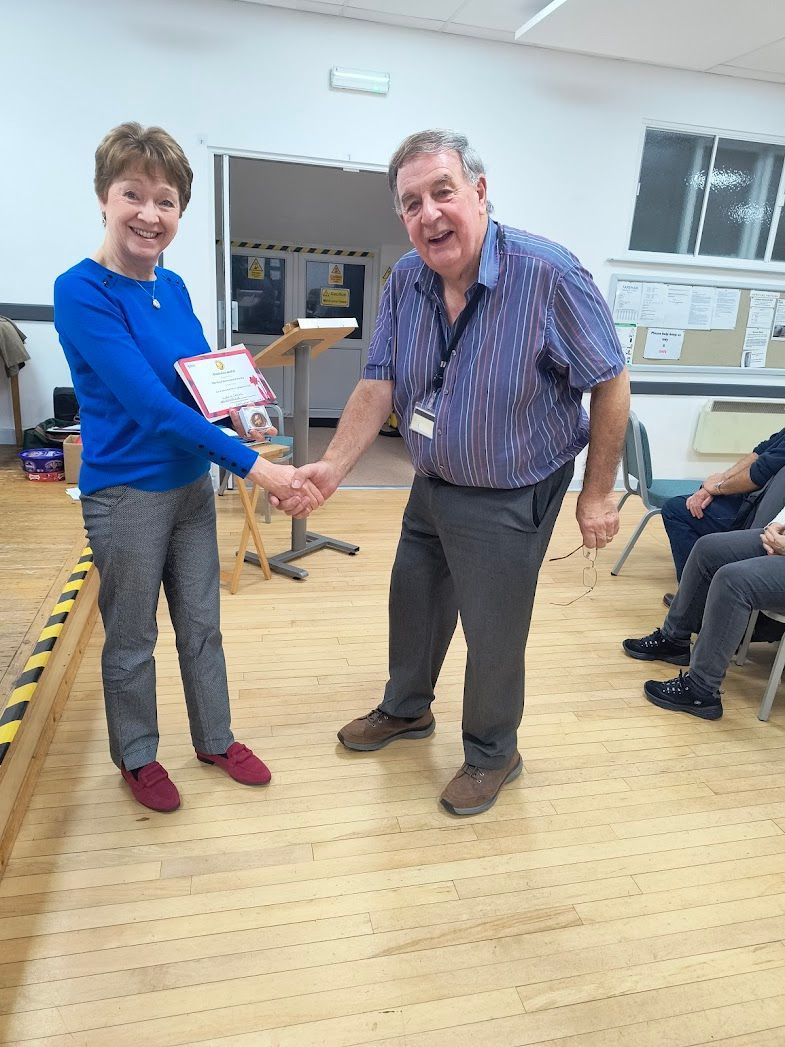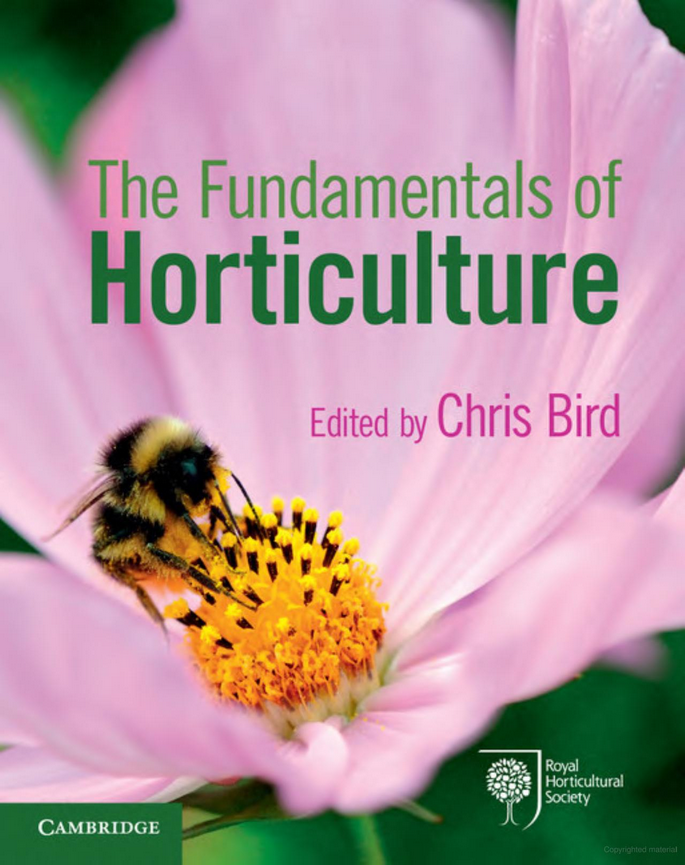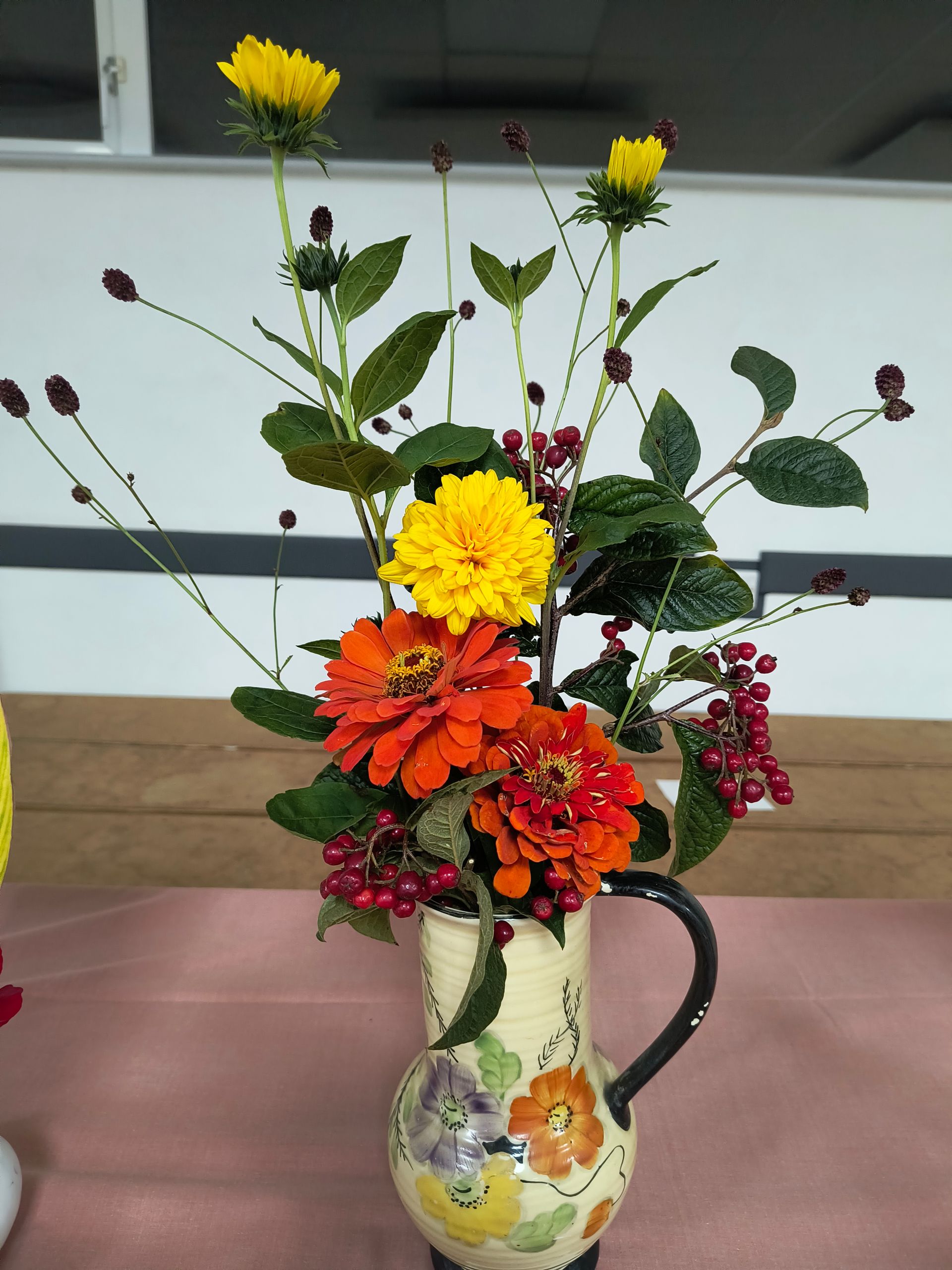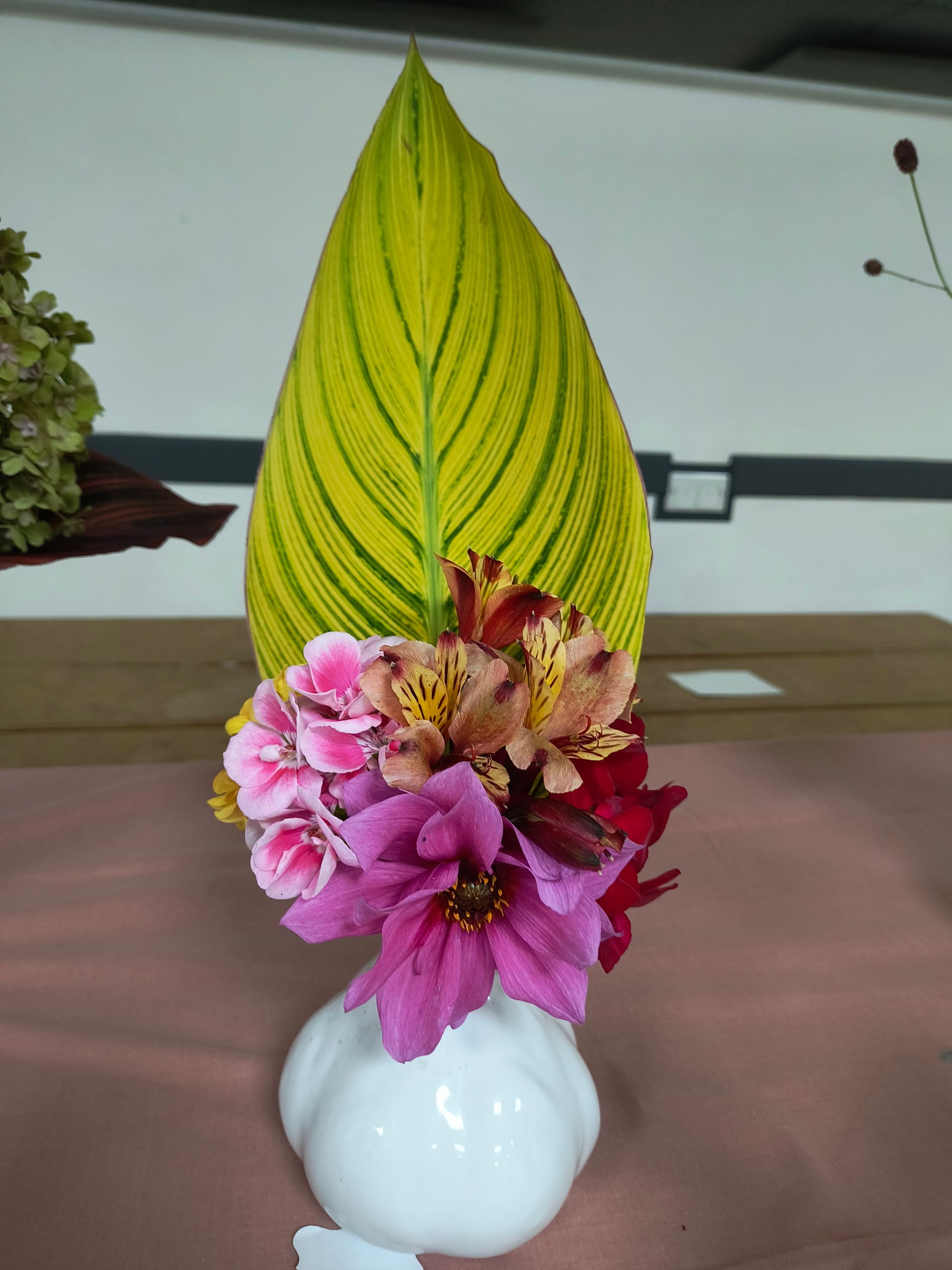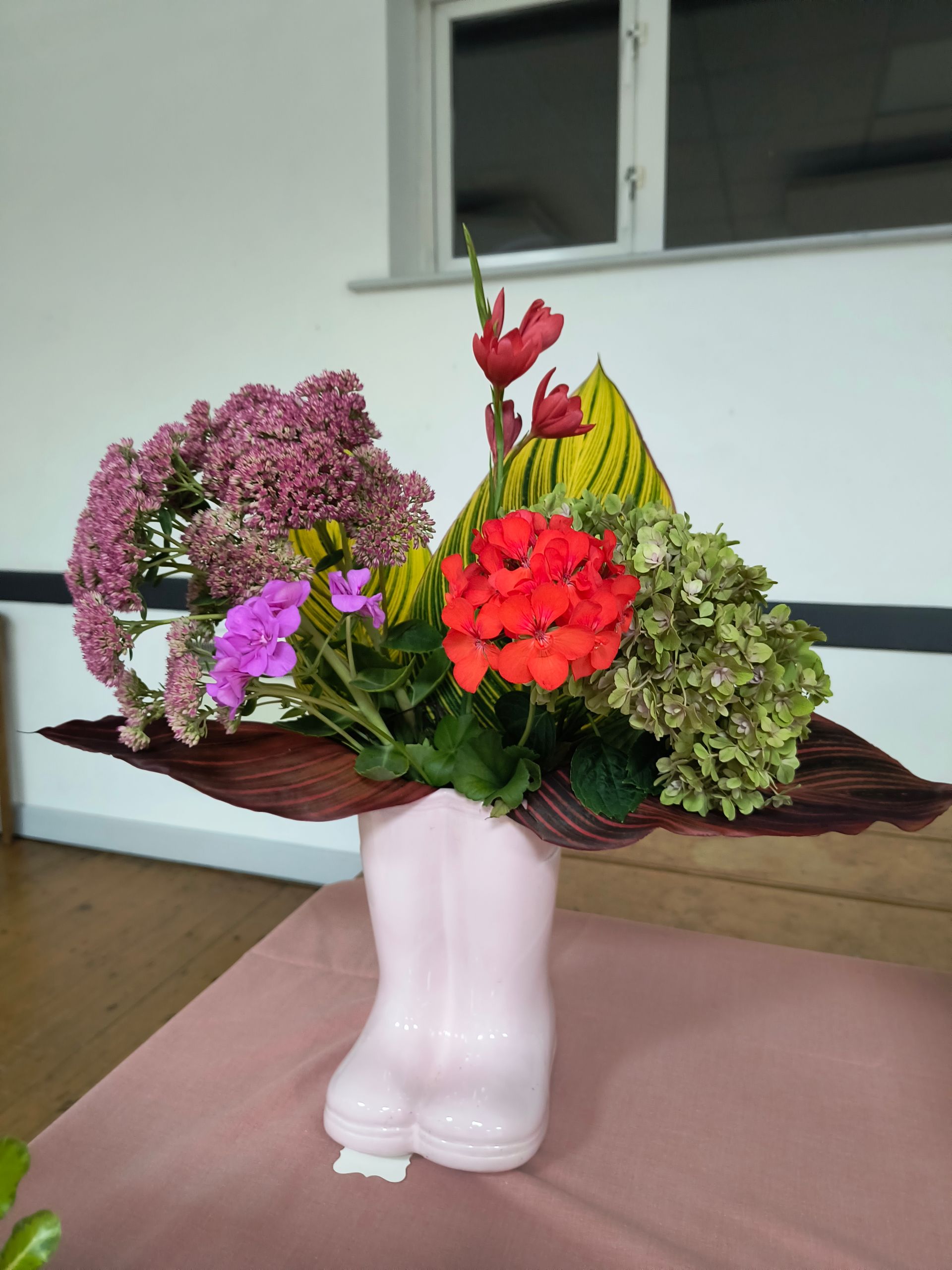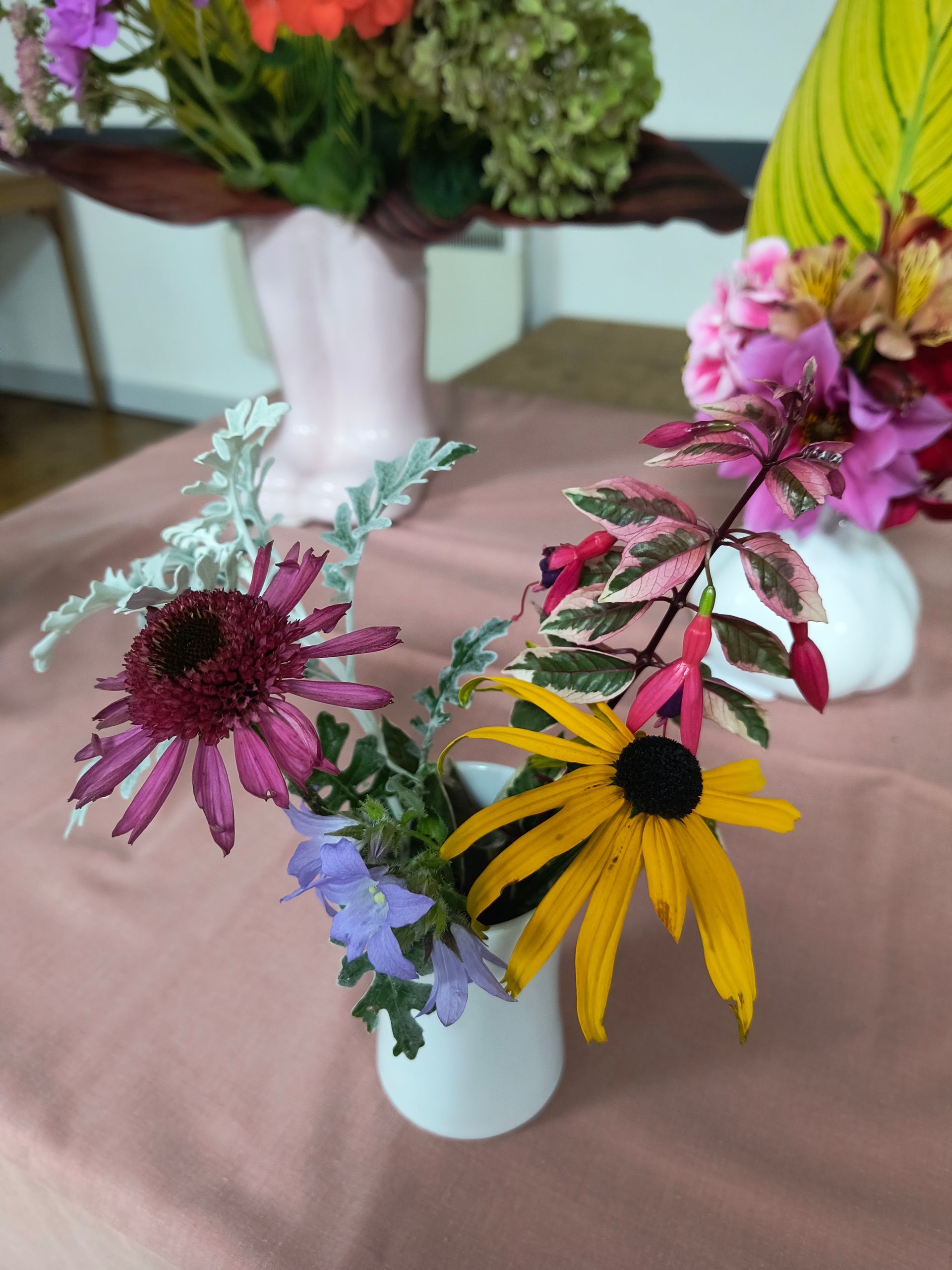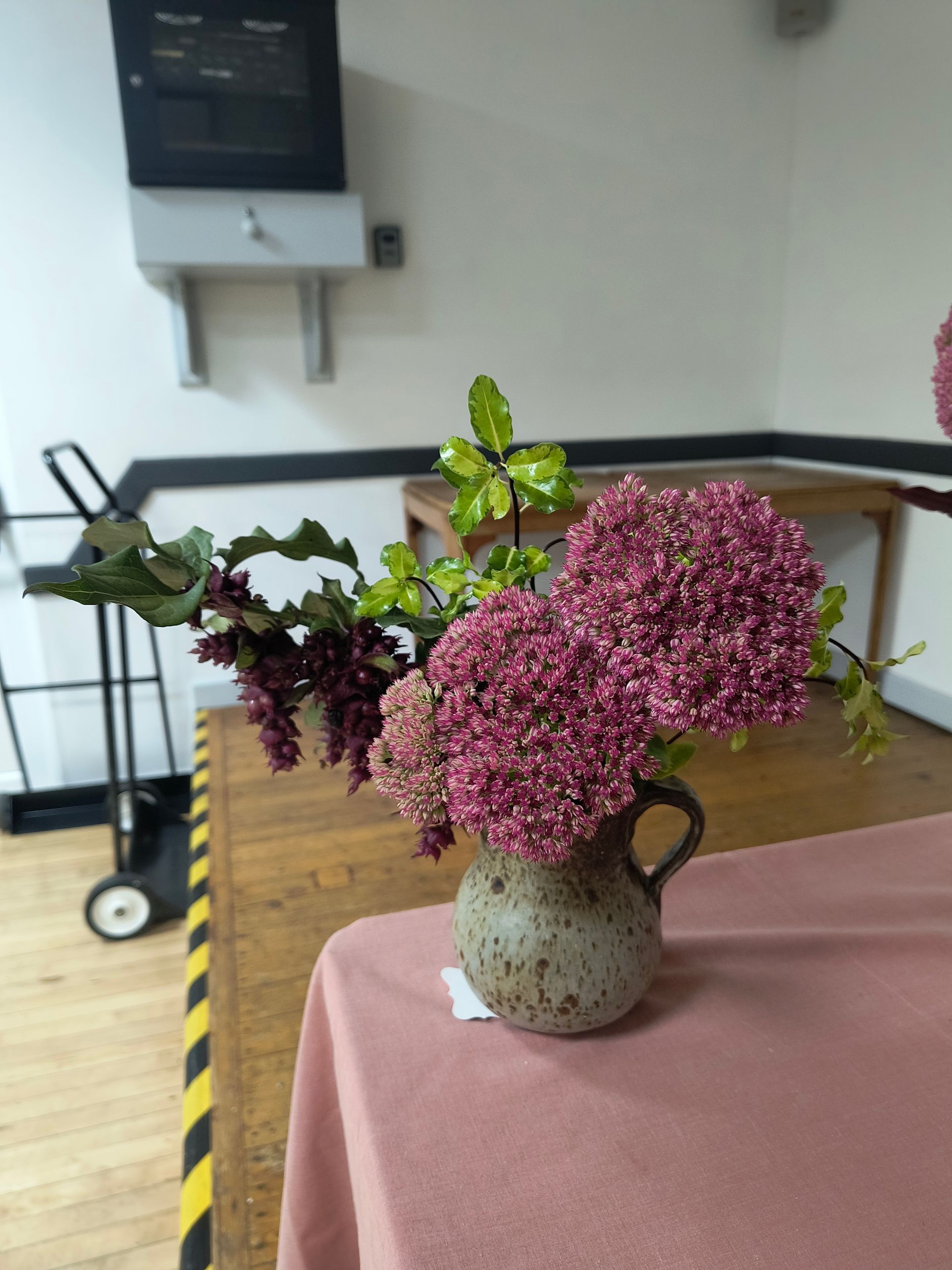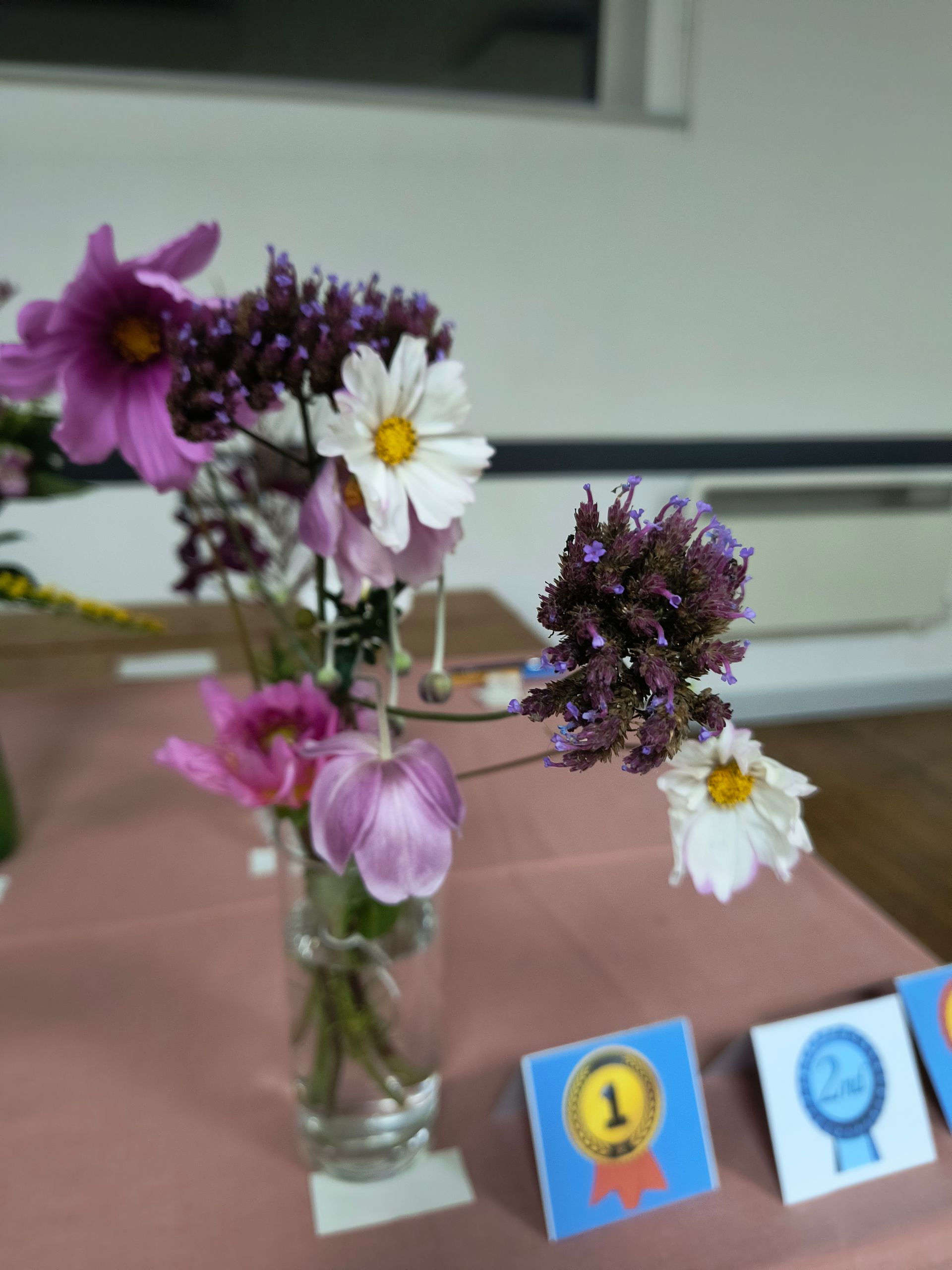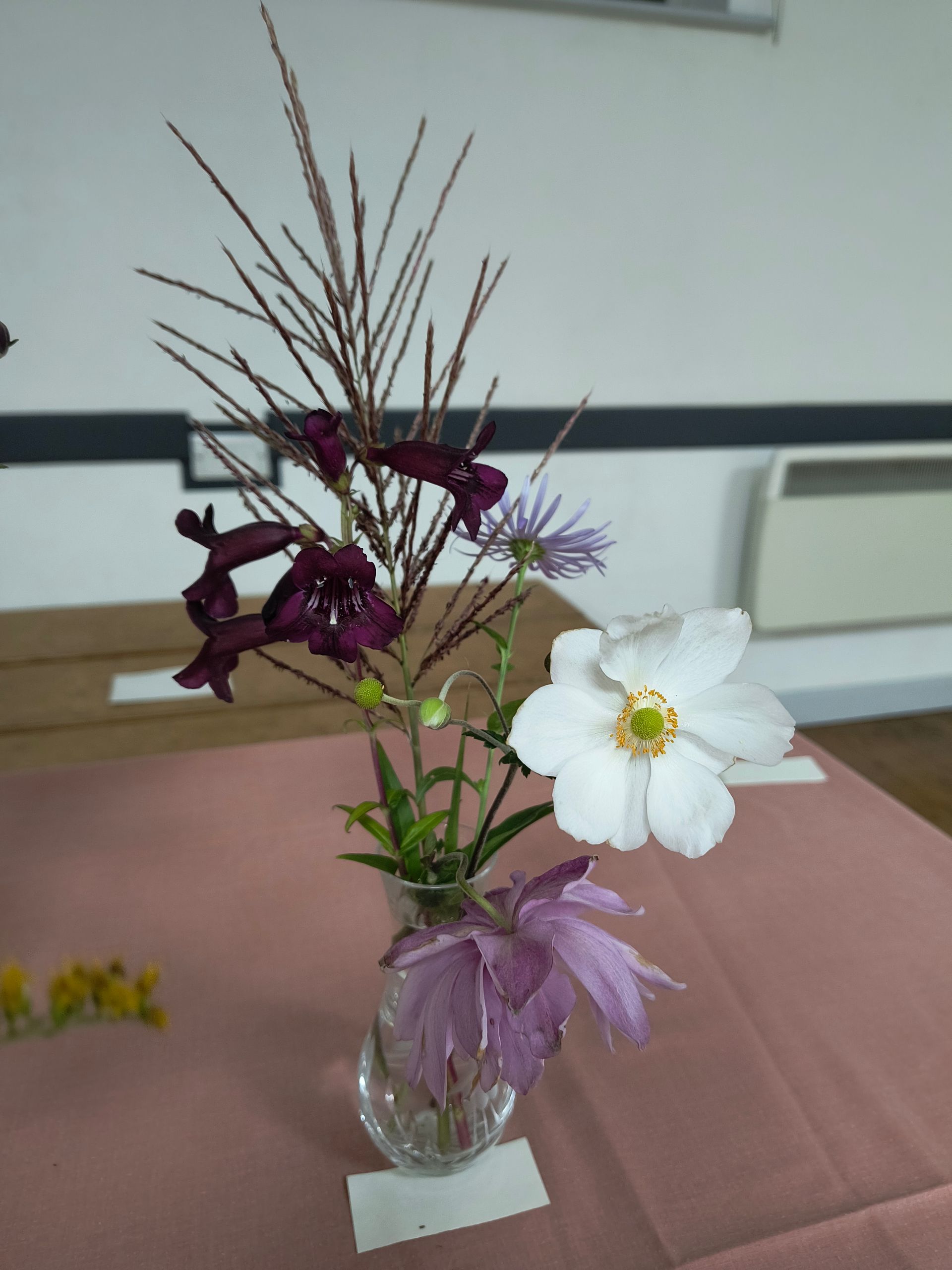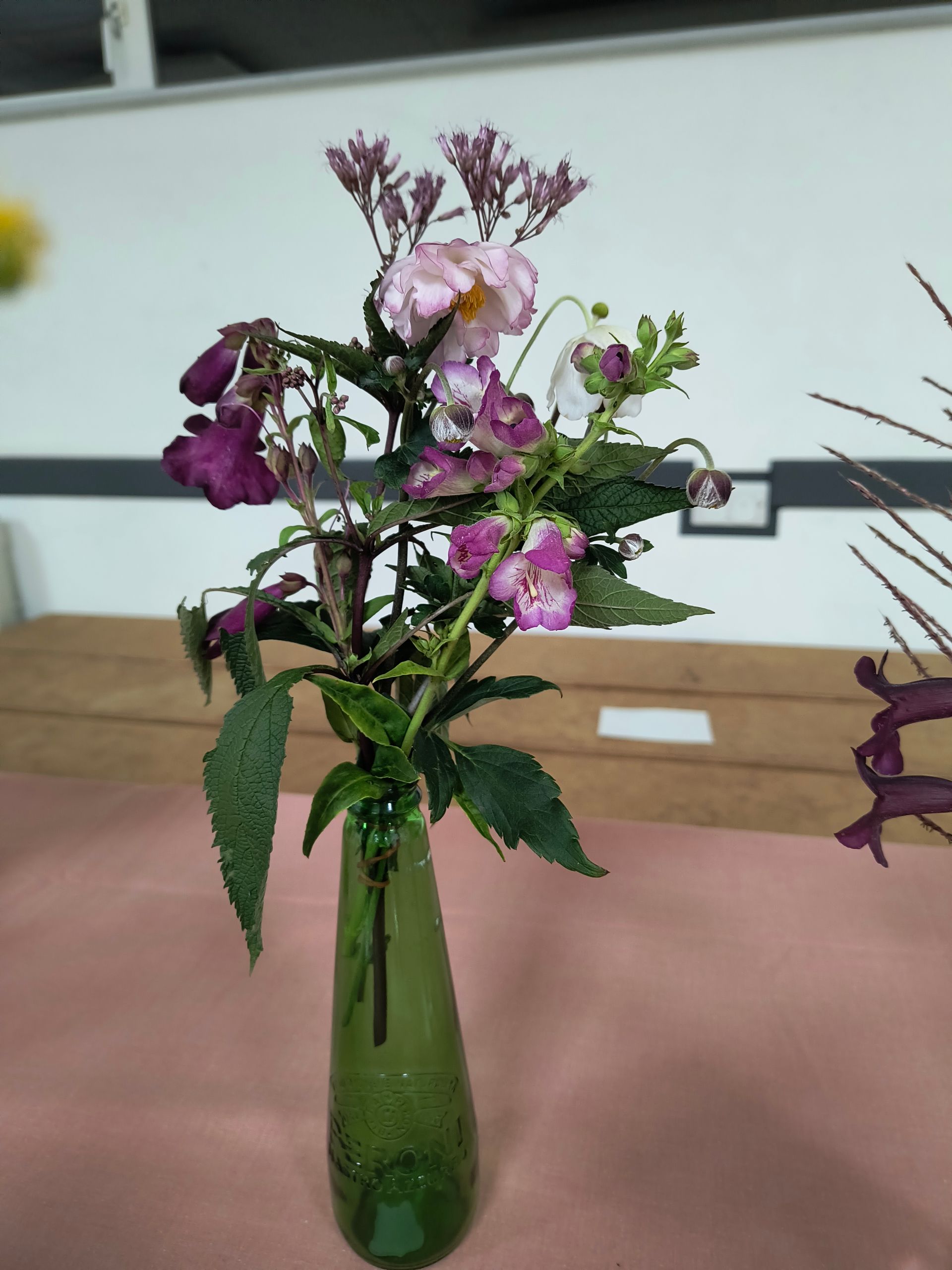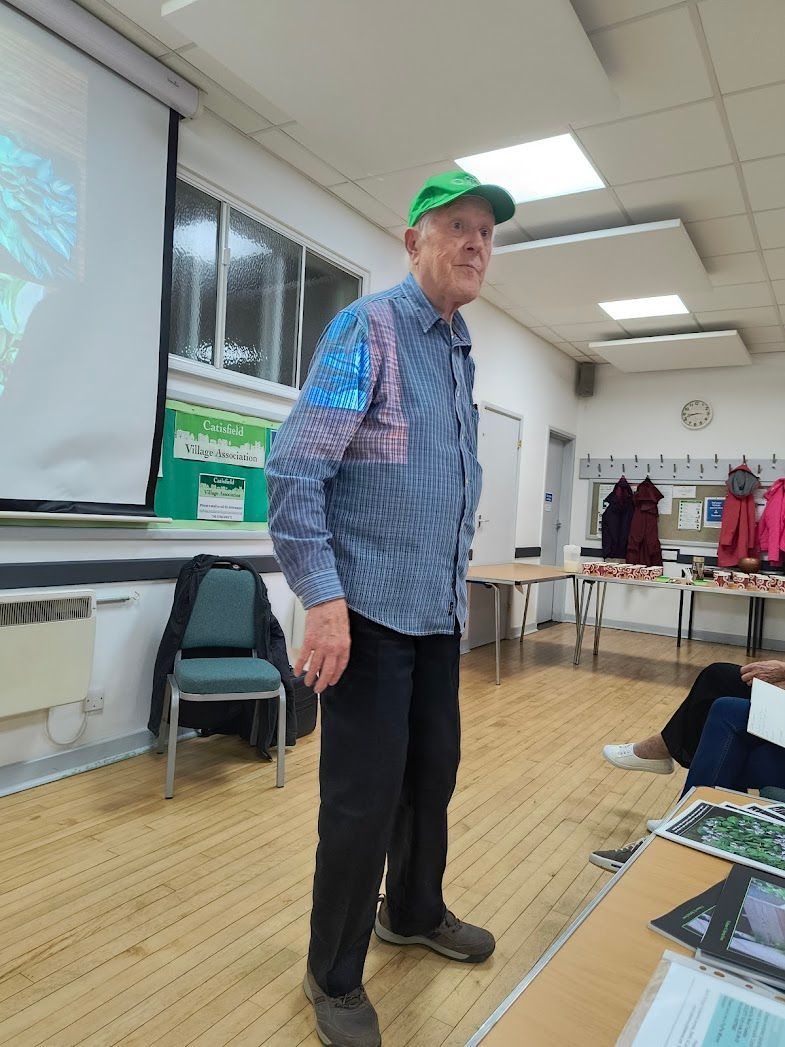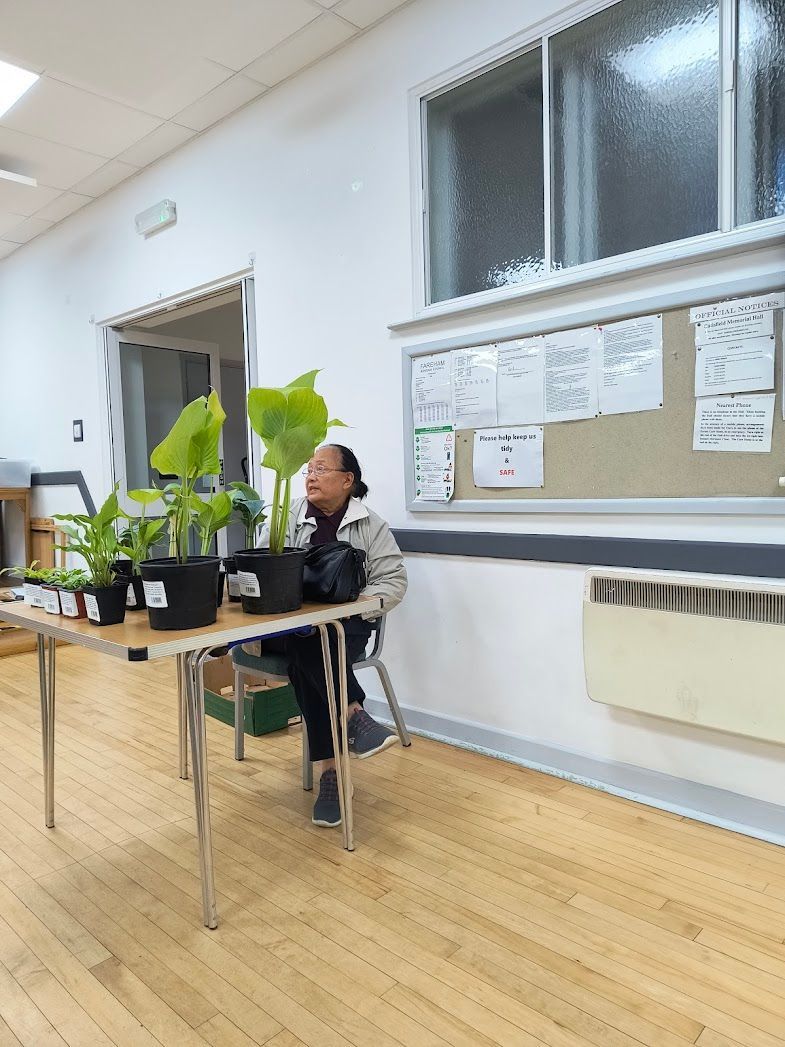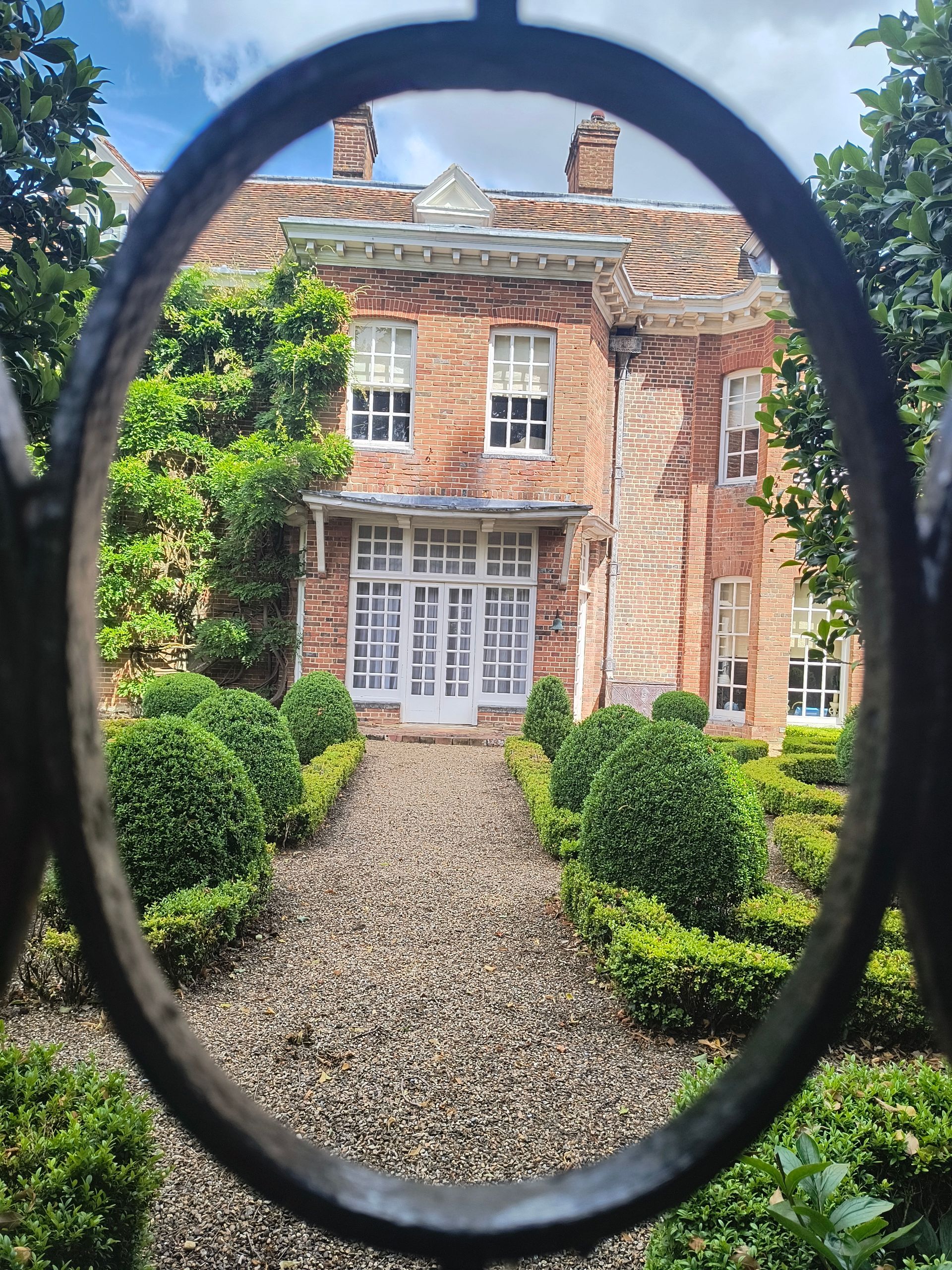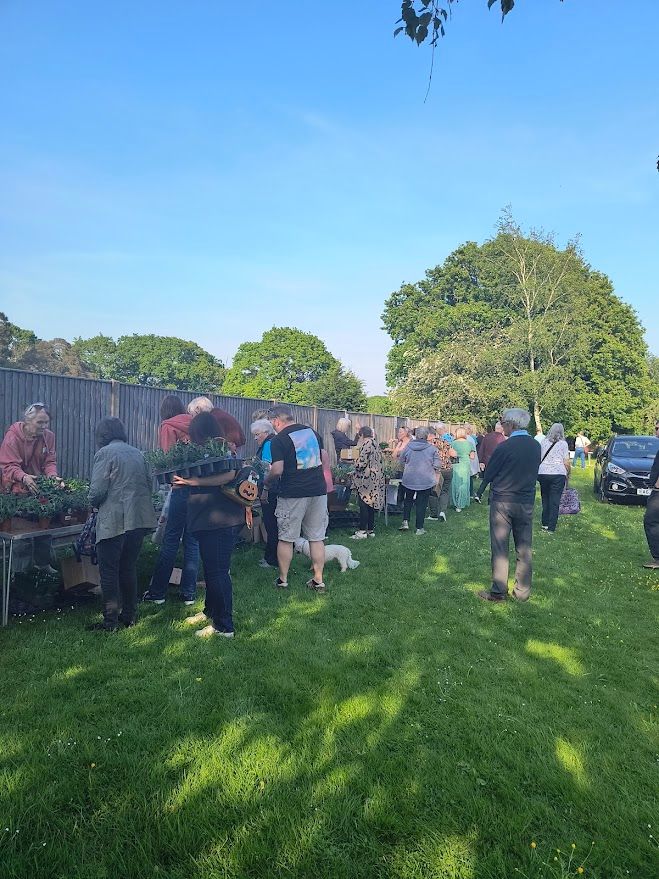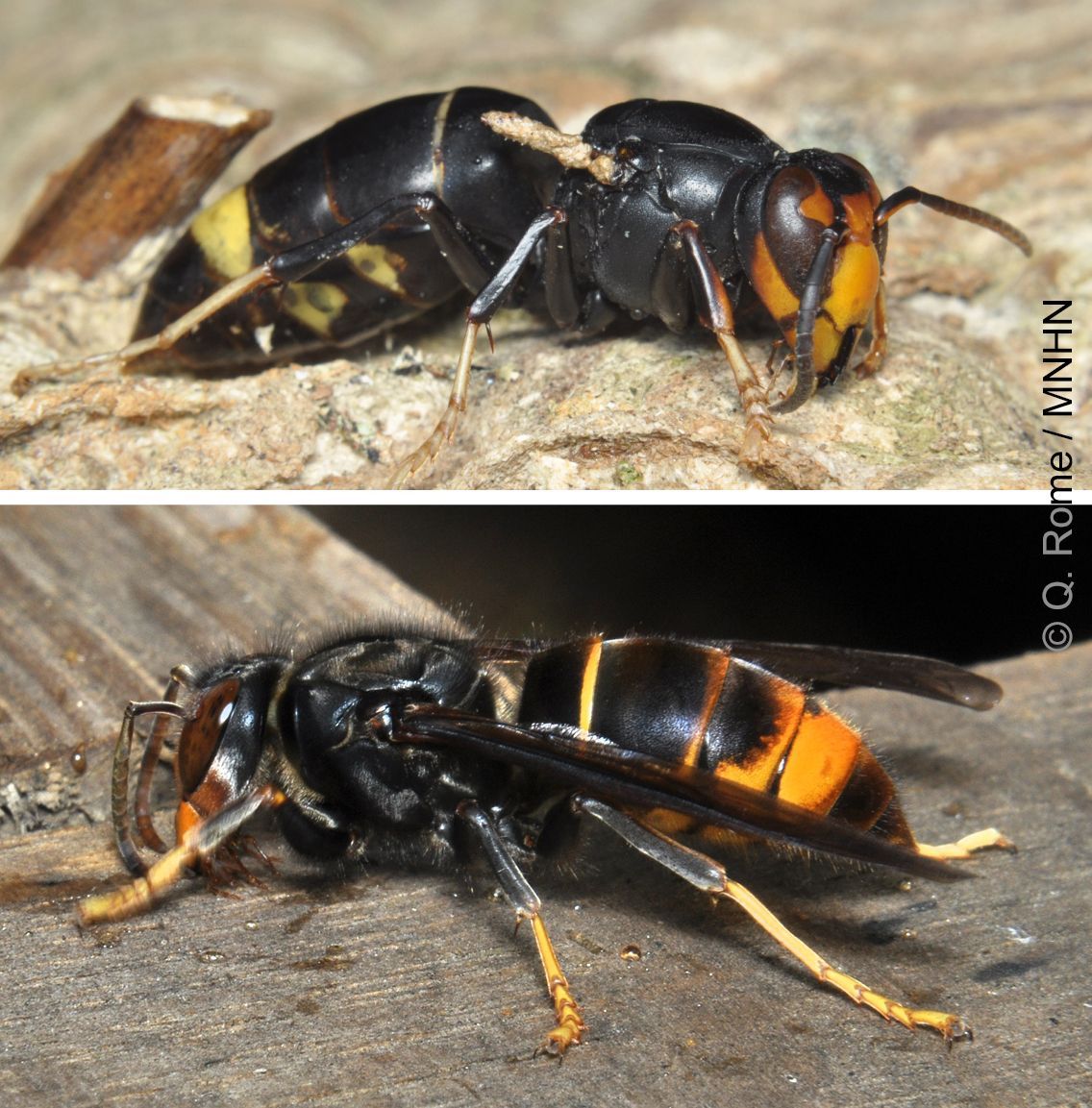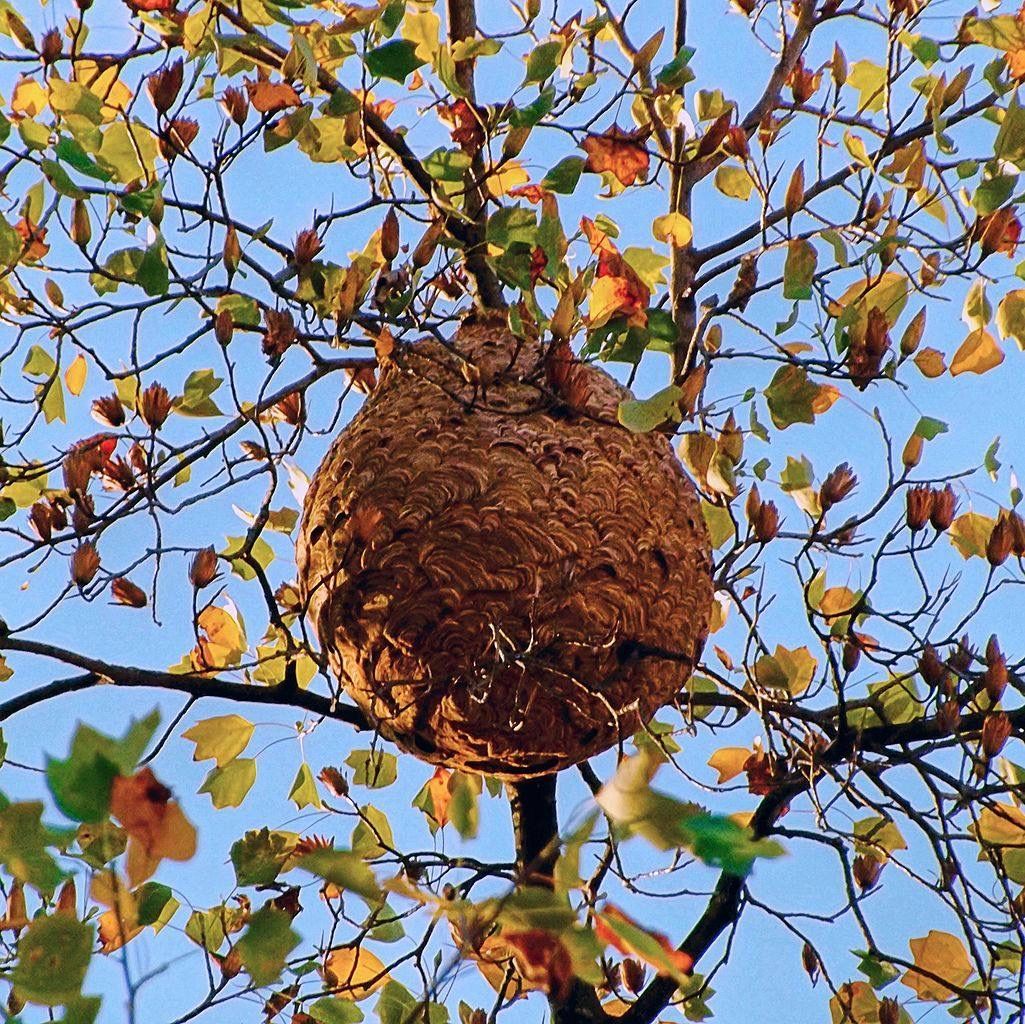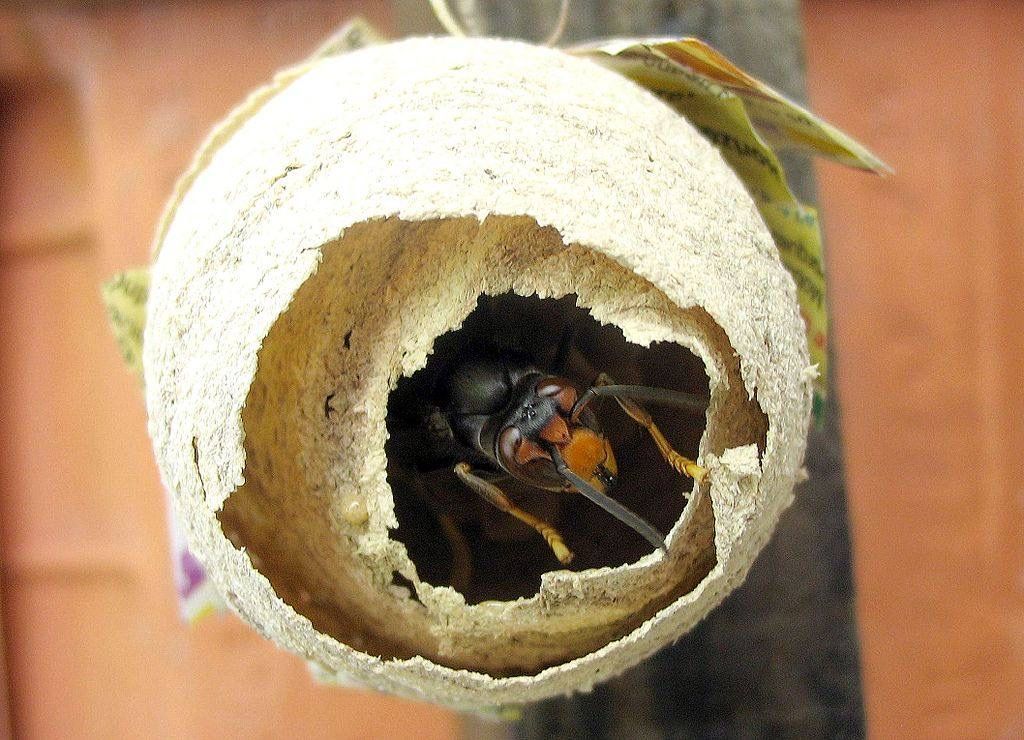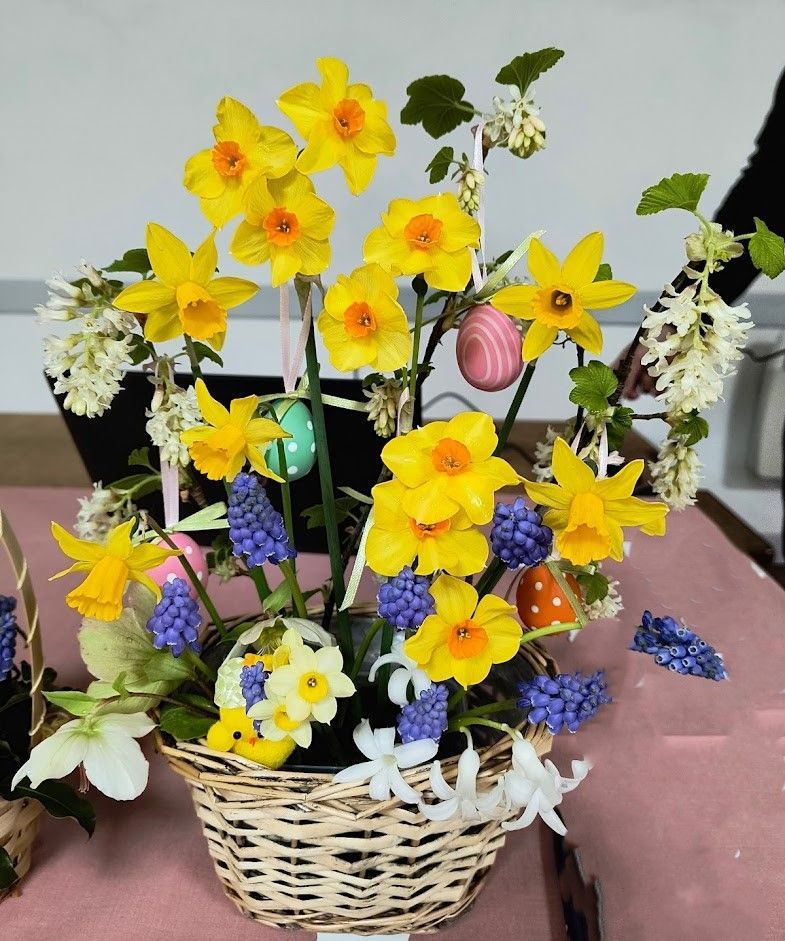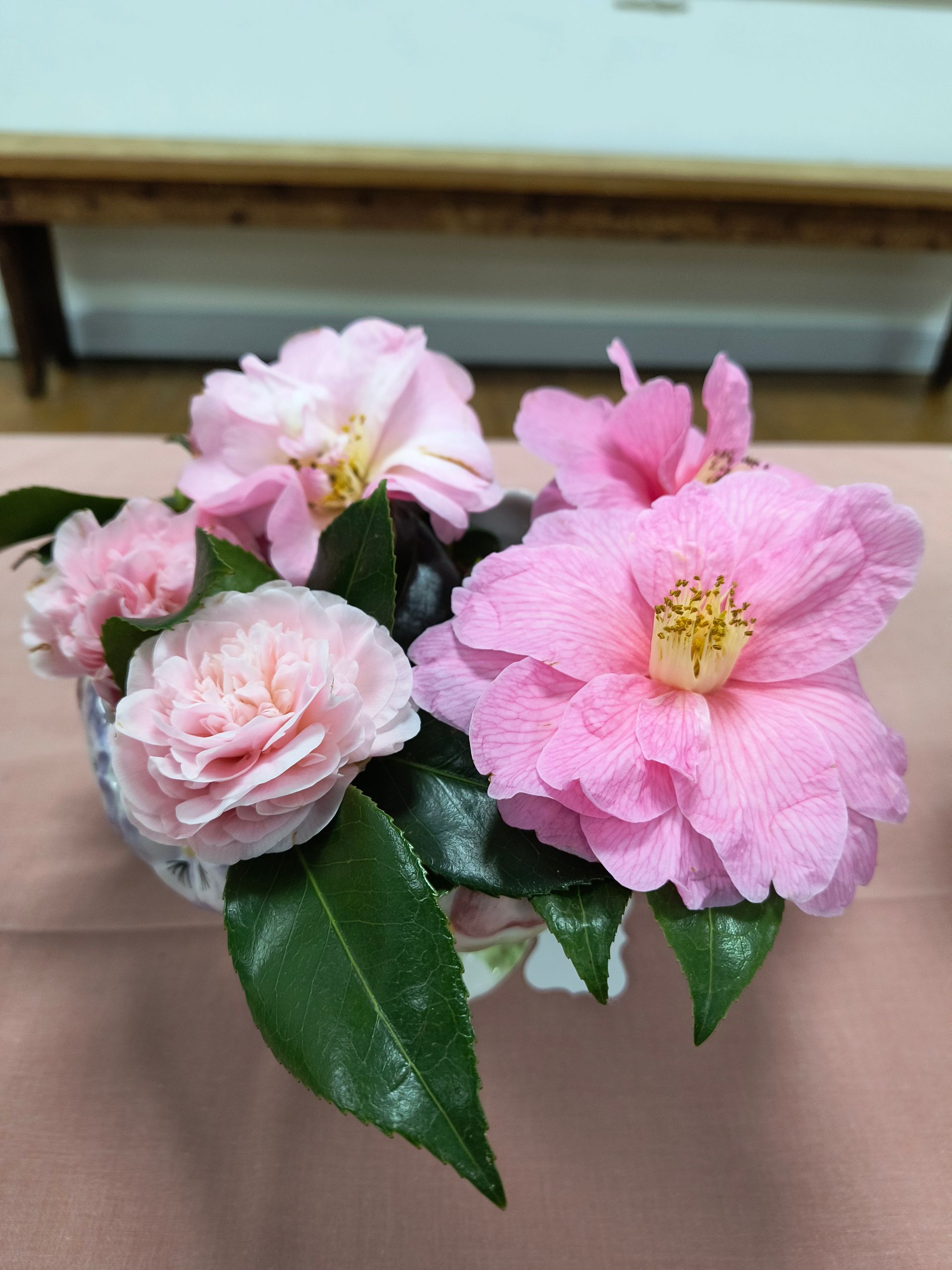This is paragraph text. Click it or hit the Manage Text button to change the font, color, size, format, and more. To set up site-wide paragraph and title styles, go to Site Theme.
- November 2025 - Annual General Meeting
- October 2025 - “Vegetable Growing - techniques, ideas and advice" - Barry Newman
- September 2025: "The Scented Garden" - Antony Powell
- August 2025: "My Garden Lepidoptera" - Steve Oates - and visit to Titchfield Abbey
- July 2025: Visit to West Dean Gardens
- June 2025: “Born in the USA: the colourful trees and shrubs of North America” – Martin Young
- June 2025: Evening Visit to St Margaret's Nursery
- May 2025: Annual Club Plant Sale
- April 2025: Gardening the Globe - Commonwealth War Graves - Alan Gregory
- March 2025: "Mottisfont's Roses" - Michael Harvey
- February 2025: "Bees and Other Pollinators" - Alan Baxter
- November 2024: Club Annual General Meeting
- October 2024: "Soil Management and Formation" - Chris Bird
- September 2024: "Gardening for Climate Change" - Kelvin Mason
- August 2024: "Heavenly Hostas" - John Barker
- July 2024: Awayday to West Green House garden
- June 2024: “Unusual plants available to the British gardener” – Roger Hirons
- May 2024: annual Club sale
- April 2024: Wildflowers of Greece and the Vegetation of Table Mountain including Kirstenbosch
- March 2024: "Topical Tips and New Ideas"
- February 2024: "Creating a Winter Garden"
- Previous Years
Thursday 13th November saw us hold our Annual General Meeting. This was very well-attended and once the formal business was concluded members tucked in to a delicious buffet prepared by Jan P, then took part in a light-hearted quiz based on a combination of TV Quiz Show "Impossible" and the board game Snakes and Ladders. The winning team, with a perfect score throughout, were The Turnips.
Minutes of the AGM are available on the AGMs and Constitution page.
Barry is a distinguished, formally trained horticulturist having trained at Pershore, York, and Bath. He is a grower, exhibitor, lecturer, and judge known for his expertise in growing vegetables and kitchen gardening. He is the Vice Chairman of the Royal Horticultural Society's (RHS) Fruit, Vegetable and Herb Committee, a former Chairman of the National Vegetable Society (NVS), and an RHS Britain in Bloom judge. In 2022 Barry was awarded the Kew Guild Medal for his distinguished service to horticulture.
Barry gave us a huge amount of advice, hints and tips about growing vegetables, a summary of which has been produced as a Factsheet in our Useful Information area. This is available to current members of the Club only, and you will need this year's Members' Password to access it.

The members' competition for October was for the heaviest conker. On this occasion, although there were clear winners for first and second place, three conkers tied for the next prize and Barry was asked to judge the "most beautiful" of these in order to determine third place. The results can be seen below.
Antony initially trained at Hillier Nurseries and then did an HND in amenity horticulture at Askham Bryan College in Yorkshire. Since then most of his work has been in private gardens although he also did a placement with the National Trust. He has made a number of visits to the Pyrenees, been on a Botanical Expedition to Kashmir and most recently an Alpine Garden Society trip to the Peloponnese in Greece. His talk on ‘Scent in the Garden’ comes out of many years of personal observations both from the gardens that he has worked in and those that he has visited.
Antony began by making the point that sent is subjective, and selected two volunteers from the audience to smell some mystery plants to illustrate this. In addition they release their scent in different ways, some needing to be brushed against or trodden on before they do so; these are best grown next to or within a path respectively. Some release scent in the evenings to attract night-flying pollinators.
He then went on to provide many examples of scented plants for use in the garden throughout the year e.g.:
- Spring - hyacinths, lilac, philadelphus;
- Summer - star jasmine, lavender, surfinia;
- Autumn - katsura trees, mahonia japonica, acacia
- Winter - winter honeysuckle, sarcococca confusa, witch hazel.

The members' competition for September was “Will you succ-seed?” – a display of interesting late summer seedheads (for example, Hydrangea, Honesty, Sunflower) of 5 stems maximum, to be placed in the club’s vases (approx. 8” high).
The winners, together with all other entries, can be viewed below.
In August we enjoyed a visit from Steve Oates who told us all about the butterflies which may visit our gardens.. Among other things we learned:
- the one consistent difference between butterflies and moths is that butterflies have clubbed antennae, moths do not;
- the veins on male green-veined white butterflies open up and shower females with a chemical, which smells like lemon verbena, and is strong enough to be picked up by humans;
- butterflies and moths may migrate over long distances, with several UK species over-wintering in Africa and Arabia.
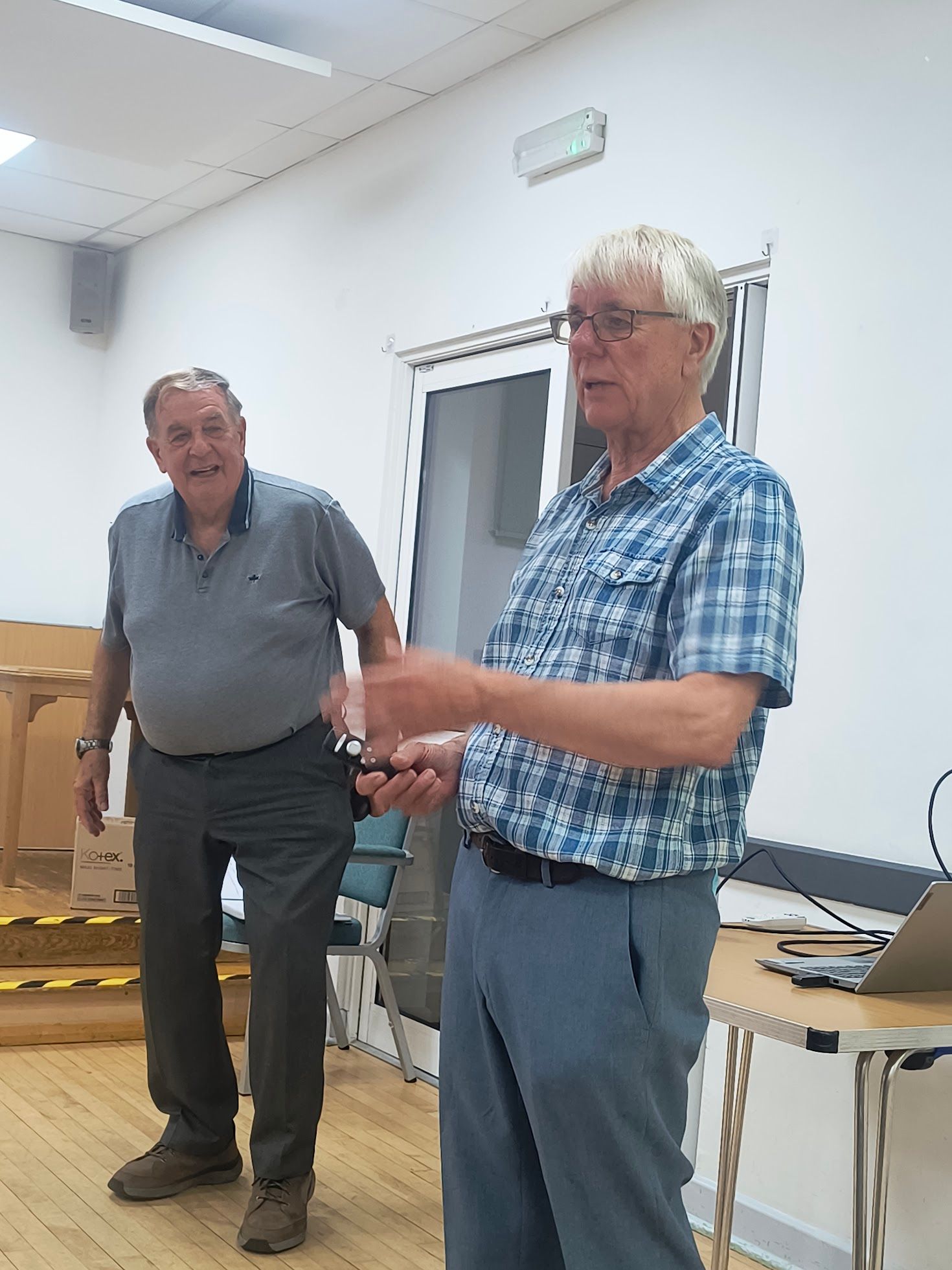
The members' competition for August was " “Picture Perfect” - a double competition, with TWO sets of prizes! In a botanical theme, either:
- create a beautiful painting or drawing in a maximum size of A4, or
- take a stunning photograph of something in your garden, maximum print size of A4.
The winners, together with all other entries, can be viewed on the August 2025 Competition page, all images are copyright of their creators and you will need this year's Club password to view them (a reminder of this can be obtained from newsletter@catisfieldgardeningclub.co.uk).
Earlier in the month the Club visited Titchfield Abbey for a private guided tour. The weather was not ideal but some hardy members managed a picnic as well. A selection of photos from this visit is shown below.
On Thursday 17th July members enjoyed a visit to West Dean Gardens.
An interesting guided tour from Senior Gardener Chantal Sparrow was followed by a cream tea in the College's Oak Hall.
For those who missed this visit guided tours with cream teas are held regularly from March through to October, details can be found here: https://www.westdean.ac.uk/gardens/events/garden-tour-cream-tea.
On his first visit to the Club, Martin entertained members with a lively talk about the plants of North America. Owing to its size, the USA has 11 different hardiness zones and a great variety of climate conditions and soil types. There were lots of photographs and he advised on the suitability of the plants for UK gardens, their appeal to pollinating insects and in many cases the ways in which they were traditionally used by Native Americans . The talk included some humouro us moments and lots of facts and advice, for example:
- It takes 40 litres of maple sap to make 1 litre of maple syrup, so don't start tapping your prize acer specimens!
- Magnolia Grandiflora evolved before flying insects, so is pollinated by crawling creatures such as beetles.
- Monarch butterlies migrate annually, with some travelling all the way between Canada and Mexico.
- The exotic looking carnivorous plant Sarracenia can actually withstand both high and low temperatures and will grow in areas of poor soil.
- The American variety of Wisteria - Wisteria frutescens - is less vigorous that its Japanese counterparts but will flower after just 2-3 years.
Martin brought along some plants for sale which proved popular with members, most of which were of North American origin.
Members' Competition
The Members' competition was entitled “Flaming June', to consist of a vibrant and colourful summer floral arrangement of 5 stems maximum, to be placed in the club’s vases. On this occasion there was only one entry so this won by default.
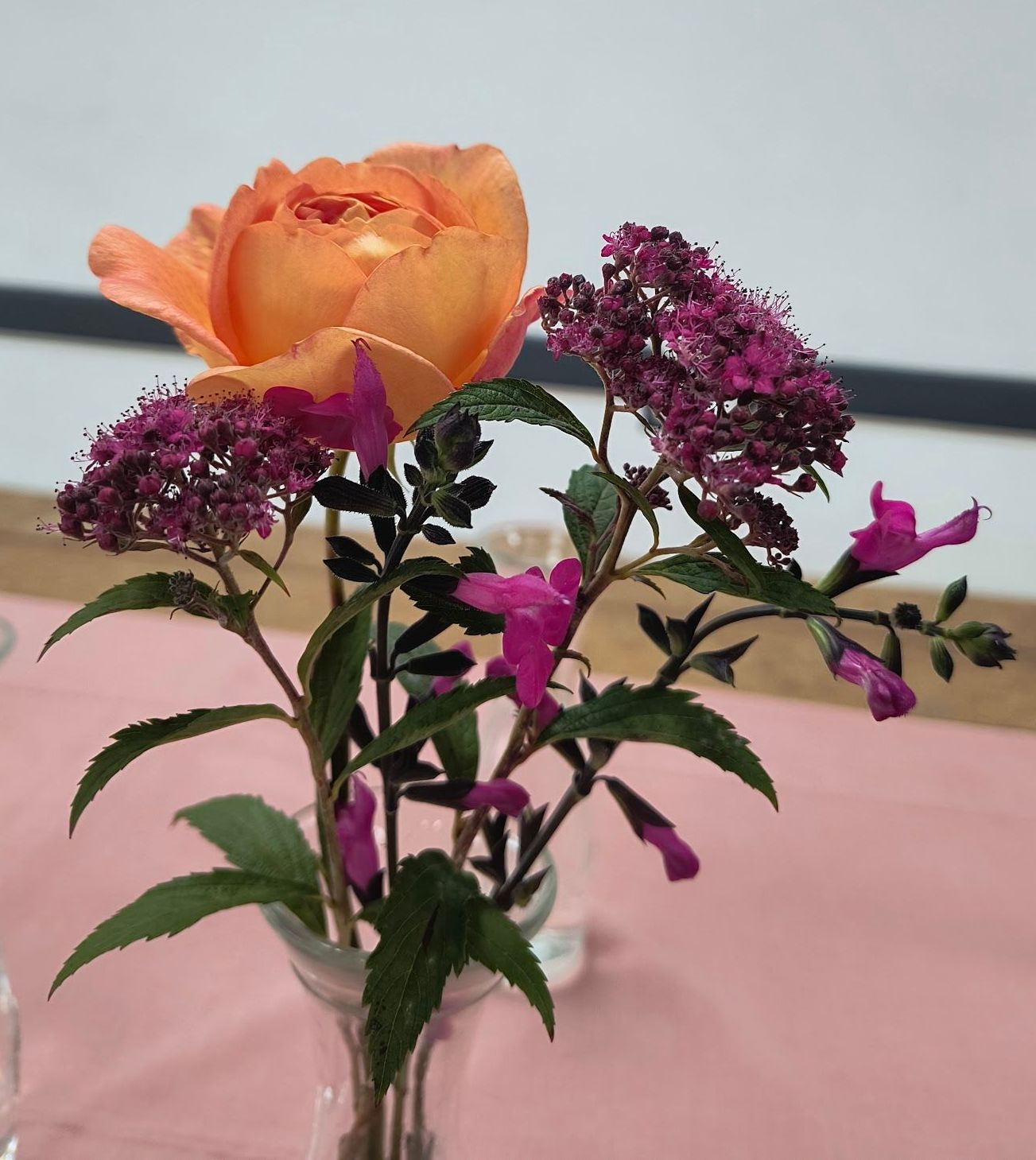
Other News
The Club Awayday to West Dean Gardens on 17th July is now sold out, but there are plenty of spaces for the private tour of Titchfield Abbey at 7pm on 7th August. Anyone who purchases a ticket to the latter will also receive a booklet written by Club Chair Glenn about the history of this interesting site.
On the evening of Thursday June 5th, 20 Club members had a private visit to St Margaret's Nursery in Titcfield.
After a slightly late start we enjoyed a behind the scenes tour of their growing and potting areas along with tea, coffee and biscuits. There was the opportunity to browse the plant areas and purchase plants and other items using our Club discount, and all those who went were given a free penstemon plant.
For those who missed this visit, remember that you can get a 10% discount at any time on all items sold by St Margaret's just by showing your membership card at the till.
The Club's annual plant sale was once again a great success.
Our Patron Fred Dinenage hurried back from an appearance in Dorset to open it for us, and stayed for quite a while afterwards chatting to members.

Photo above: Fred Dinenage chats to people waiting in the queue before opening this year's sale
In addition to the Club Members who came we had 76 visitors, and made a total of £830.25. Takings were made up as follows: Plant & Garden Item Sales - £626.25 up £1.50 from 2024, Raffle £113 down £26 from 2024, Visitors Entrance £76.00 up £26.50 from 2024 and Visiting Sales £15 down £5 from 2024.
We are extremely grateful to our Sponsors St Margaret Nursery and all the local businesses who provided raffle prizes for their donations. The wonderful support from our Members, who both donated and purchased plants, were a key contribution to the events success.
The meeting opened with Club President Doug Glading presenting a book to the President of the Trustees of the Memorial Hall, Penny Melvillle-Brown OBE. The book is the culmination of years of work carried out by Doug researching and telling the story of the 19 people who are commemorated on the plaque in Catisfield Memorial Hall commemorating the local men and women who lost their lives during the Second World War. To celebrate the 80th anniversary of VE-Day he turned his research into a 'photobook' which in due course will be on display in the Hall.
The evening's talk
Alan the began his talk. During the First World War the government made a decision not to repatriate fallen soldiers due to the cost and resources this would require. Initially bodies were usually buried where they fell by their surviving comrades, but in 1916 the War Graves Commission was formed at the request of Fabian Ware, a Red Cross volunteer, who had already started trying to identify and mark the graves of British soldiers. Over time a decision was made to concentrate the bodies in larger cemeteries, and eventually the CWG Commission was set up to maintain these.

Photo above: Alan Gregory
Members' Competition
The Members' competition was entitled “It’s Easy Being Green”and consisted of a display of any flowers from members' gardens in a re-cycled or re-purposed container. Winners and other entries are shown below.
Other News
Glenn reminded members that tickets are on sale for the Club Awayday to West Dean Gardens on 17th July and the private tour of Titchfield Abbey on 7th August. He also mentioned that the visit to St Margaret's Nursery, originally scheduled for 26th June, has moved to 5th June.
Alan Baxter reminded members to report any sightings of Asian Hornets using the app, online form or email address (more information here: https://www.catisfieldgardeningclub.online/useful-information#AsianHornets). He brought in a model to show members what to look out for, pictured below; note in particular the large amount of black colouring, the yellow band close to the tail and the yellow legs.
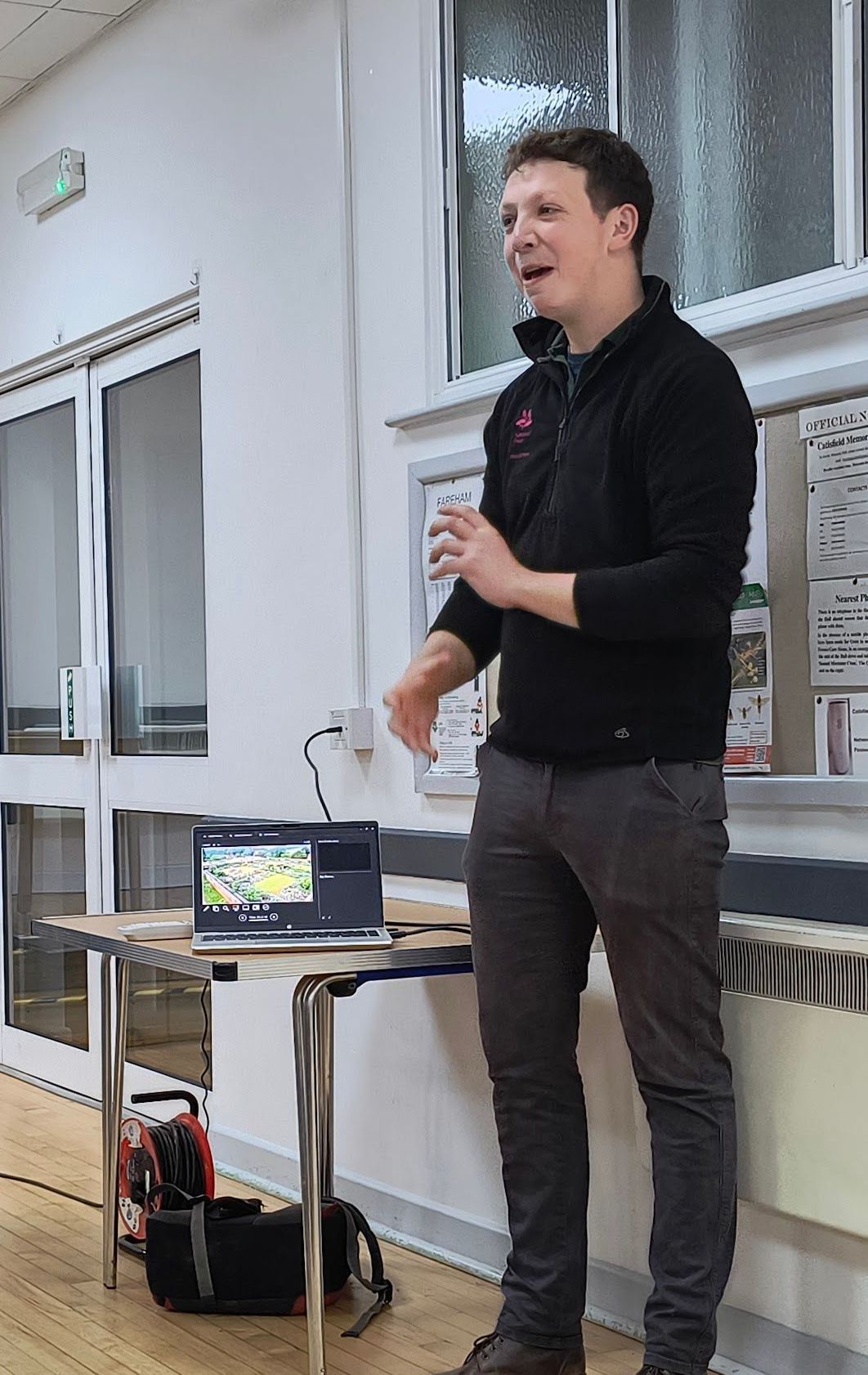
Photo above: Michael Harvey
- Mulching is incredibly beneficial, use your own compost or other plant-based organic material
- Prune roses in the Winter / early Spring, ideally between January and March, no later than 1st April. Pruning varies depending on the type of rose, see the article in our February newsletter for links to detailed guidance. However, most roses don't need to be hard-pruned, consider the over all shape you want the plant to be.
- Plant deeply (set grafting point to 2 inches below soil level) to help prevent wind rot. New plants will benefit from the addition of mycorrhizal fungi.
- Start watering 1-2 weeks before hot weather is expected if possible, then water regularly until it cools down
- Roses do not like strong nutrients, mulching should give them all the food they need. Do NOT use manure.
The Members' competition was entitled “Spring has Sprung”and consisted of an arrangement, in your members' own containers, of either narcissi, crocus or snowdrops, a dozen stems maximum of the same variety. In practice only three entries were received, all featuring narcissi, and all three won prizes.
- Don't use chemical sprays
- Leave flowering weeds. Dandelions are particularly helpful for pollinators
- Have a diverse mix of flowers, native / local varieties are particularly useful
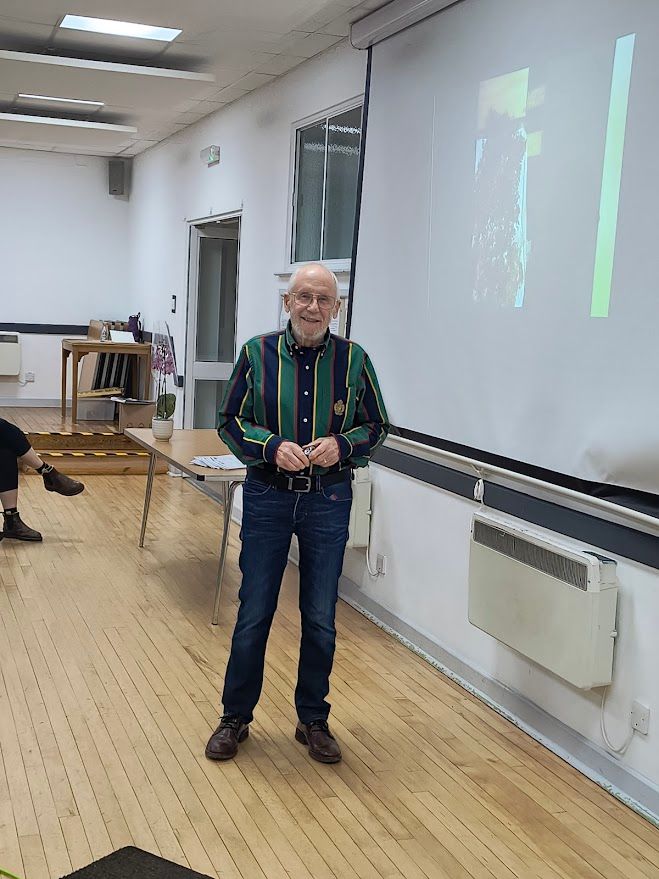
Photos above: Alan Baxter
The Members' competition was entitled “The Winter Garden” and consisted of a display winter flowering perennials in members' own vases. The prize winning and other entries are shown below.
Photos above: Glenn presents Lorraine with her Banksian Medal, members enjoying the quiz
Chris provided a lot of information but a few key points are:
- Soil should be moist and frost free for planting or mulching
- If the soil sticks to your boots stay off it to avoid compaction
- The appearance of worm casts is a good indicator that your soil is warm enough for sowing seeds
- Earthworm colour can be an indicator of soil health: light brown indicates healthy soil, black or blue indicates problems.
A more detailed summary of Chris's talk is available to Members only (you will need the current password to access it) under Useful Information / Fact Sheets.
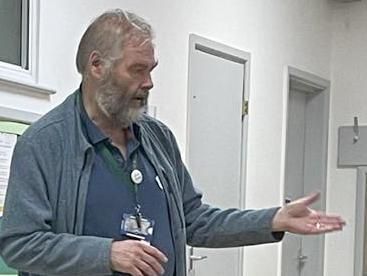
Sadly there were no entries for this month's Members competition which was for a carved pumpkin or gourd.
- Compost all your organic waste;
- Add lots of organic matter to your beds - mulch with your compost or other organic matter to a depth of at least 2 inches / 5cm every year;
- Collect and reuse water. Rain water is ideal but most grey water can also be used (ie water from washing vegetables, washing up and bathing. Don't use the output from a dishwasher due to salt content);
- Reduce hard landscaping e.g. non-permeable paving (which causes water run off and flooding) and decking (which attracts rats). Replace it with vegetation e.g. a lawn, or if it's still needed use porous paving or gravel;
- Replace walls and fences with hedges;
- Plant in 4 layers: tree, shrub, herbaceous plants and short / ground cover plants. This increases year-round interest, slows down rain so that it is less likely to run off and provides habitats for many creatures.
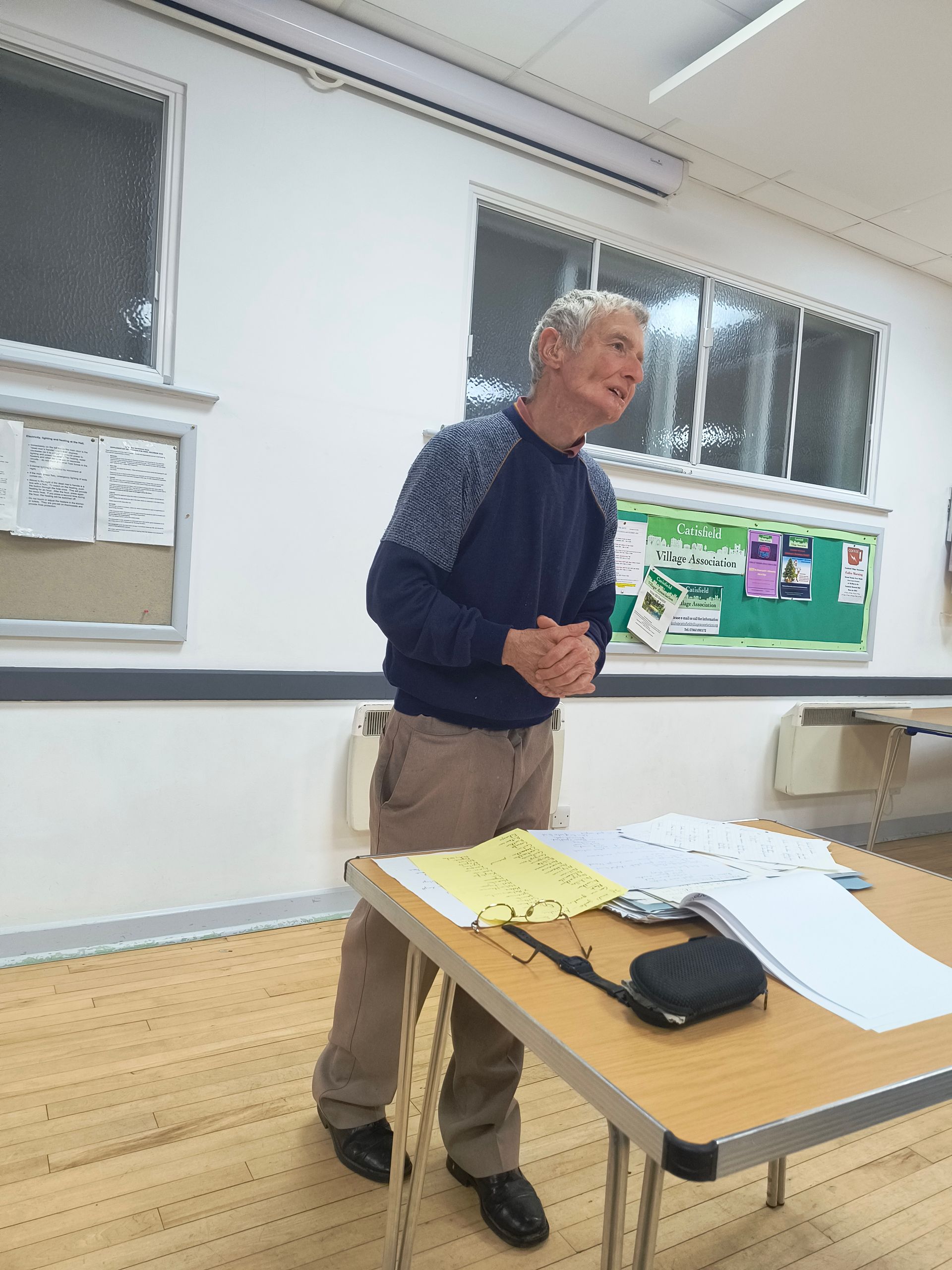
After the tea break, Kelvin spoke about planting native British trees in our gardens. He recommended purchasing bare root trees directly from the grower, these can be ordered in advance online for delivery over the winter months. Once received they should be planted in a hole wide enough to accommodate all of the roots and deep enough to plant the tree to the same depth as it was previously planted (which can usually be identified by a change in colour or a flare at the base of the trunk). Insert your stake before you plant your tree to avoid root damage. If you cannot plant them immediately heel them in i.e. pop in a hole or trench and cover the roots with soil or compost; it is important not to let the roots dry out. Keep the tree well watered for its first two years.
Kelvin then went on to talk about how to identify plants which are likely to be drought-resistant. Signs include fleshy leaves which store water (e.g. succulents), thin or needle like leaves which reduce transpiration (e.g. rosemary, lavender, grasses), grey, hairy leaves which again reduce transpiration, deep root systems (e.g. acanthus, achillea), low growth (e.g. alpines).
Kelvin has written a book on the topic of adapting your gardening for Climate Change which can be purchased by clicking on the photograph below:
The Members' competition for September was "Autumn Glory” – a display of late summer blooms, max 5 stems. Winners and other entries are shown below.
- pellets (the modern, iron-based ones which are not harmful to wildlife)
- home-made solutions of Espom Salts (2 tablespoons / gallon of water, do not use table salt which is harmful to soil)
- ammonia (10% solution applied fortnightly)
- garlic spray (2 crushed bulbs boiled in 1 litre of water, then further diluted by adding 1 tablespoon of this to a litre of water and applying fortnightly)
- coffee grounds (re-brewed at a rate of 1 cup to 9 litres of water applied fortnightly, grounds are available free of charge from Garsons)
- beer traps.
After the tea break Glenn Duggan gave a short talk about the history of Blackbrook Park which was created as a recreational space for the Heathfield estate with flowers added in 2010.
The Members' competition was for a beautiful painting or photo of something in the garden. In view of the copyright nature of the entries to this competition they can only be viewed by current members, click on the button below and enter this year's password to see them (password available from the newsletter editor - newsletter@catisfieldgardeningclub.co.uk - if you need a reminder).
Club Chair Glenn informed members that next year's annual awayday will take place on Thursday 17th July, when we will visit West Dean gardens. The cost of £22.50 will include a tour, and tea and scones in the Grand Dining Room of the main house which is not normally open to the public!
Plant & Garden Item Sales - £624.75 up £41.64 from 2023
Raffle £139 up by £2 from 2023
Visitors Entrance £49.50 up £8.50.

Photo above: speaker Gerald Ponting
Members' Competition
The members' competition was entitled ““Spring Spray” – an arrangement of spring blossoms, max 5 sprigs.. Winners can be seen below.
- when re-seeding your lawn, put the seed in a closed bin bag with some compost for 4 days first. This causes the seed to swell which discourages birds from eating it.
- contrary to common recommendation, site your compost bin on a solid base e.g. paving stones. This discourages pests such as rats, and Ray advises that you don't really want worms in your compost, it's better to encourage them to stay in the garden soil.
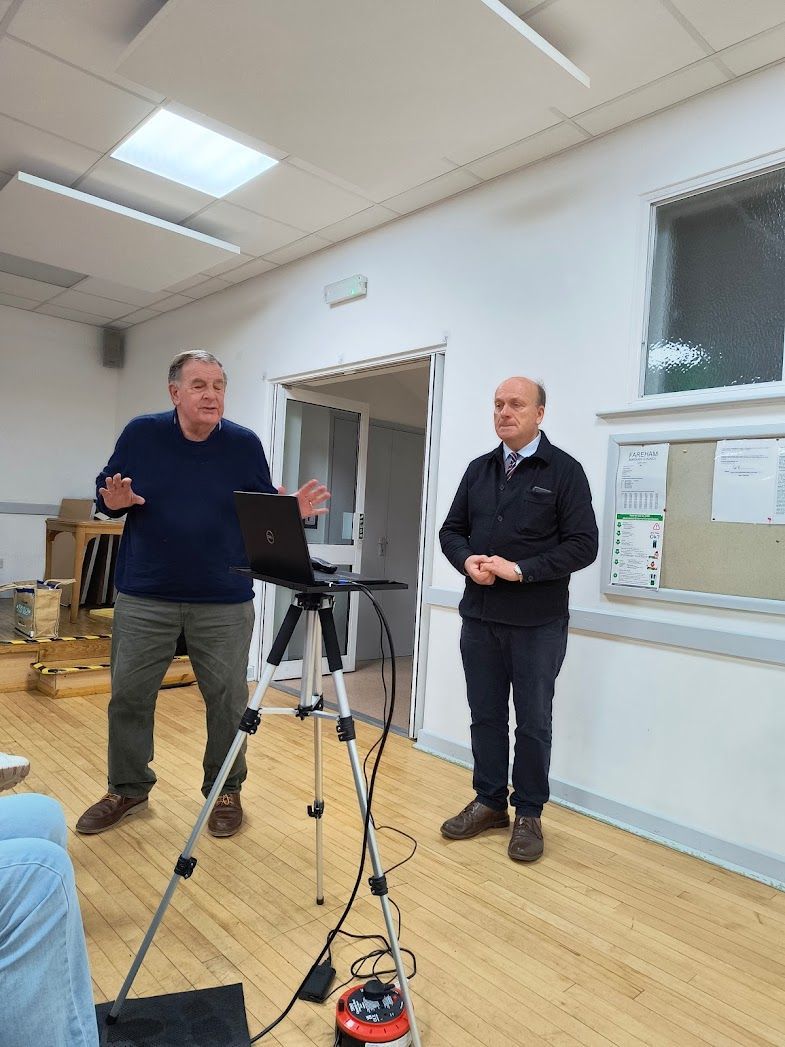
Photo above: speaker Ray Broughton with Club Chair Glenn Duggan
Asian Hornets
At the beginning of the meeting, Alan Baxter reminded members of the dangers of Asian Hornets. There was an article on this topic in the May 2023 newsletter, and you can find information about how to identify it here: https://www.nonnativespecies.org/assets/Uploads/ID_Vespa_velutina_Asian_Hornet_5.0-1.pdf; the photos below may also help.
If you spot one in your garden report it using the free Asian Hornet Watch App, via the Non Native Species online notification form, by email to alertnonnative@ceh.ac.uk or direct to Alan if you have his details. Where possible a photo, the location of the sighting and a description of the insect seen should be included.
Members' Competition
The members' competition was entitled “Happy Easter” and consisted of an Easter-inspired floral arrangement in a small basket. Winners and other entries can be seen below.
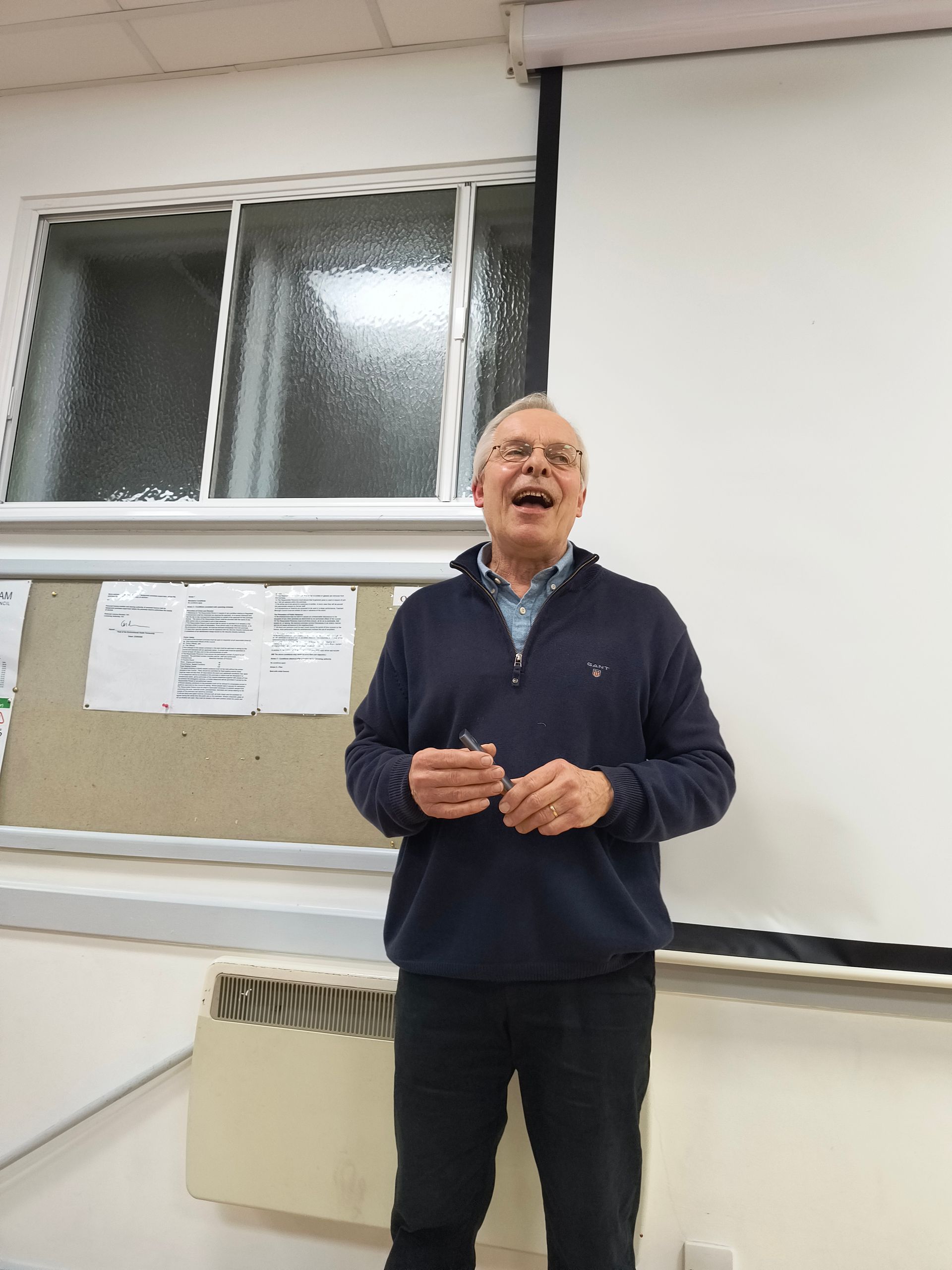
Photo above: speaker Mark Porter enjoys a joke with Club members
